SpaceX's Crew Dragon Demo-1 Test Flight in Pictures
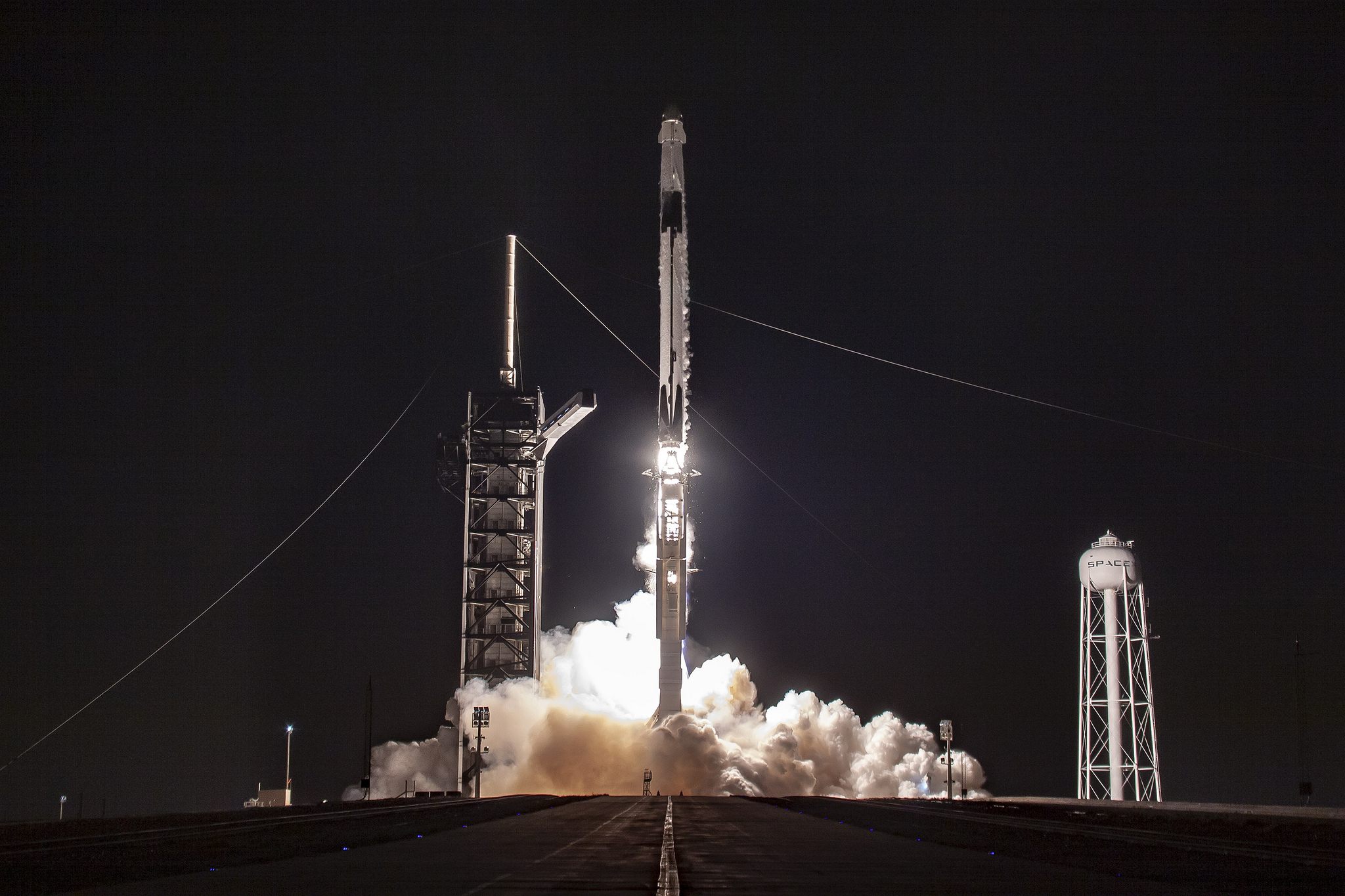
SpaceX launched the first test flight of the Crew Dragon spacecraft on March 2, 2019. Riding on top of a Falcon 9 rocket, the uncrewed capsule began its round-trip journey to the International Space Station. If the mission goes according to plan, SpaceX plans to start launching astronauts this summer.
Full Coverage: SpaceX Dragon Crew Demo-1 Flight to Space Station
The Falcon 9 and Dragon lifted off from NASA's historic Launch Complex 39A at the Kennedy Space Center in Florida at 2:49 a.m. EST (0749 GMT). On March 3, it arrived at the International Space Station, where it will remain docked for one week before returning to Earth. See photos of the mission in this gallery!
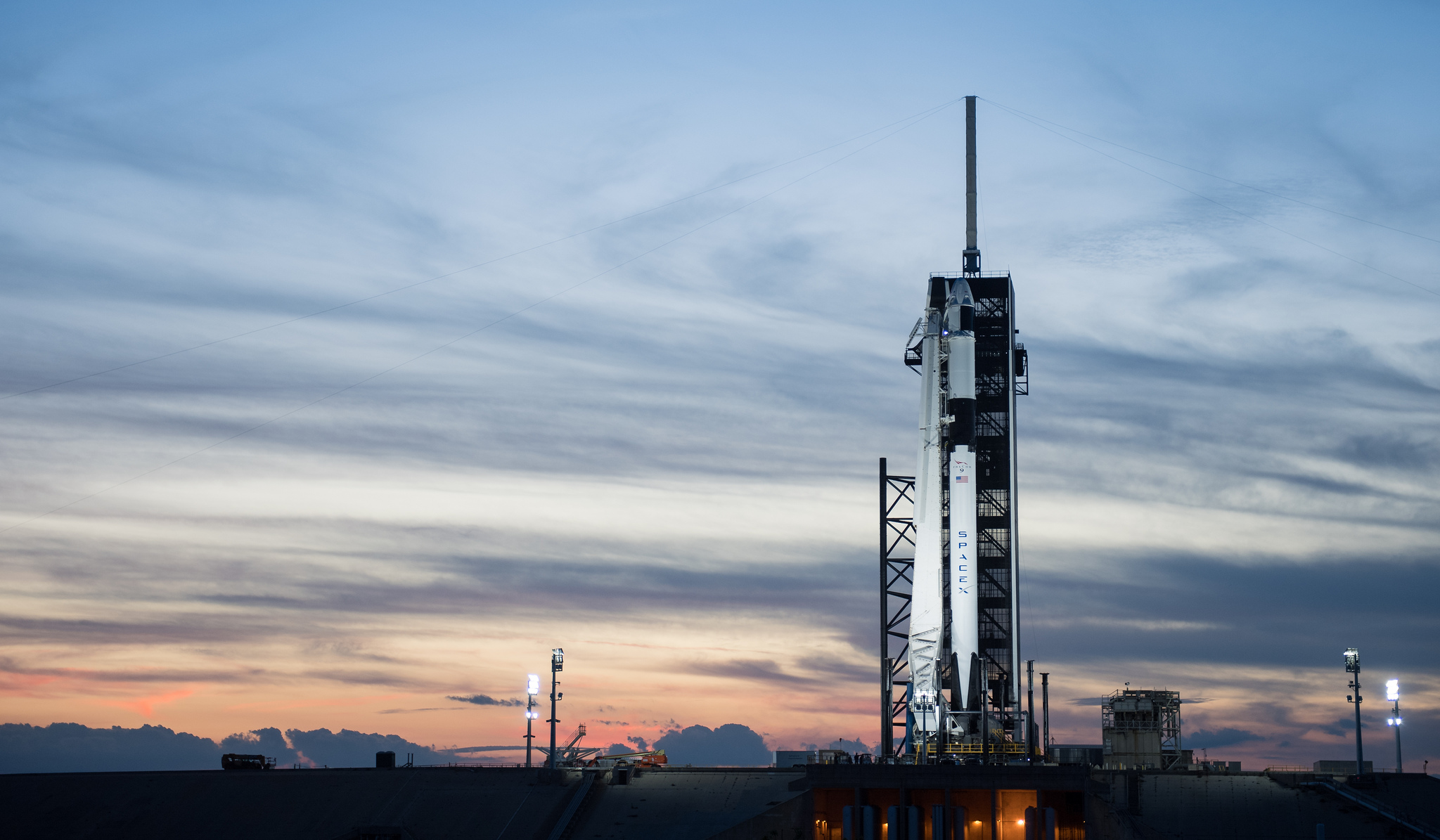
SpaceX launched the Crew Dragon Demo-1 mission from NASA's historic Launch Complex 39A at the Kennedy Space Center in Florida. The launchpad once supported NASA's Apollo and Space Shuttle programs, and SpaceX has refurbished it for commercial crew launches to the International Space Station.
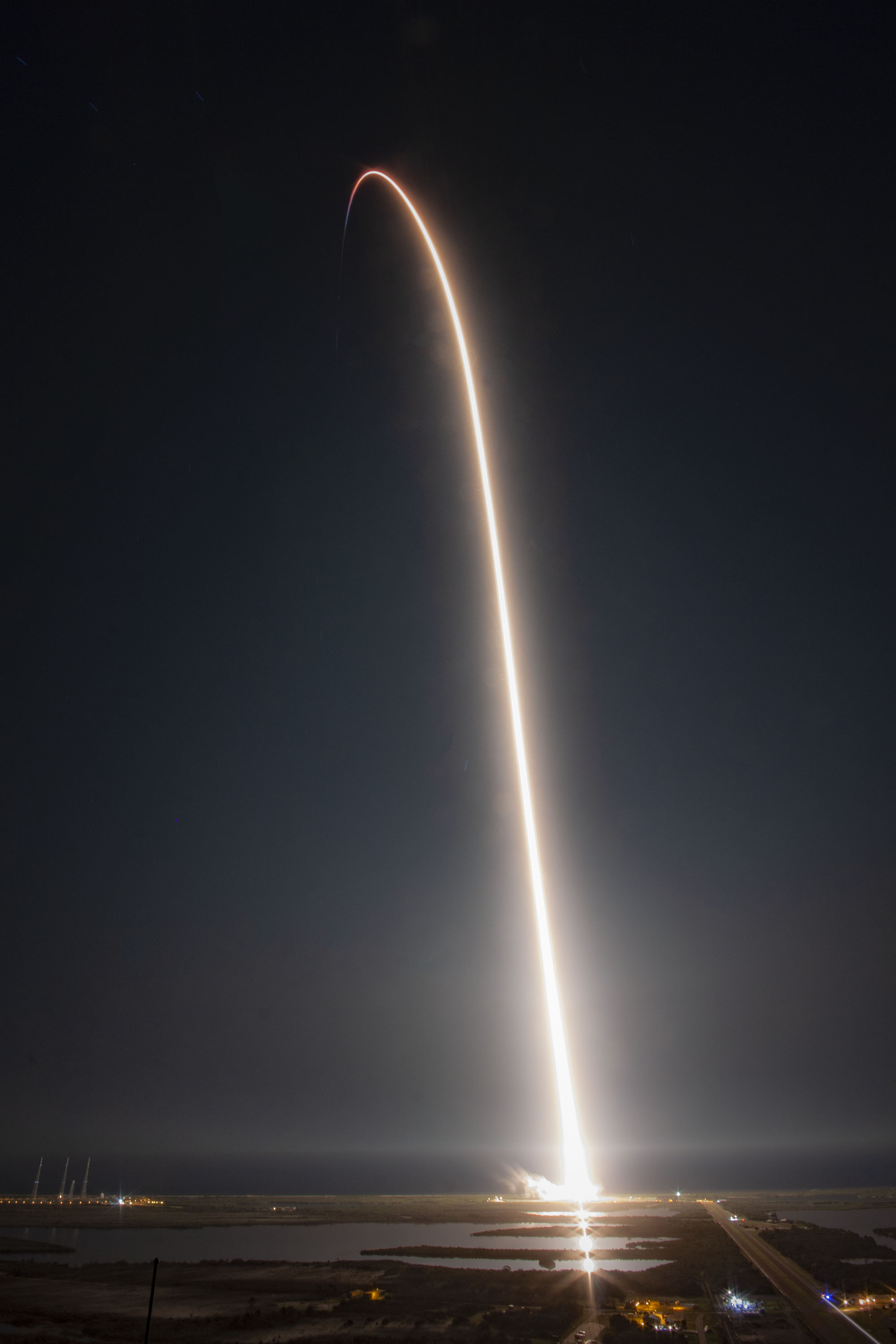
A long-exposure photo shows the Falcon 9 rocket's fiery trail as it heads into space.
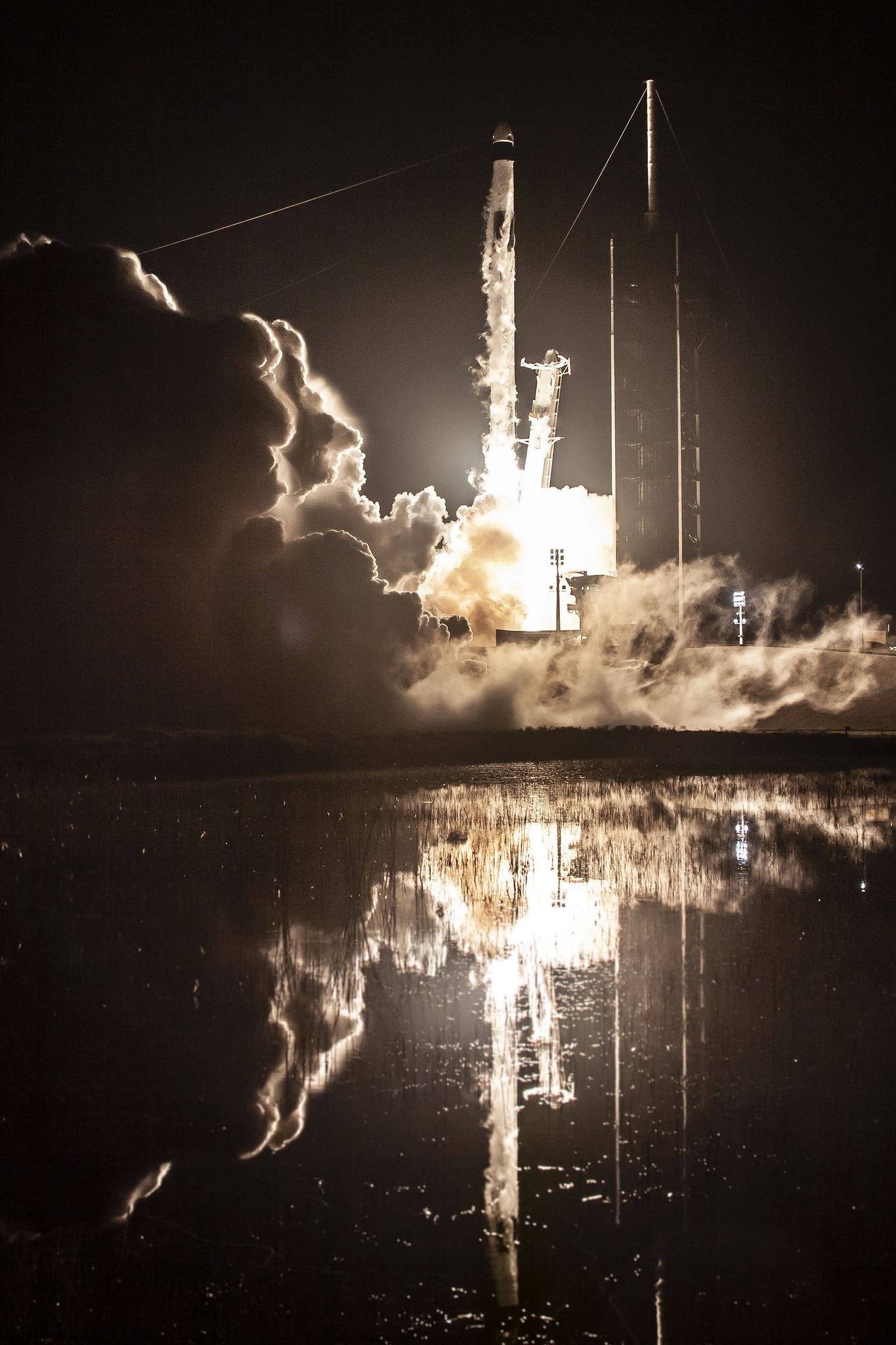
Smoke billows out from below the Falcon 9 rocket as it begins its journey to deliver the Crew Dragon spacecraft into orbit.
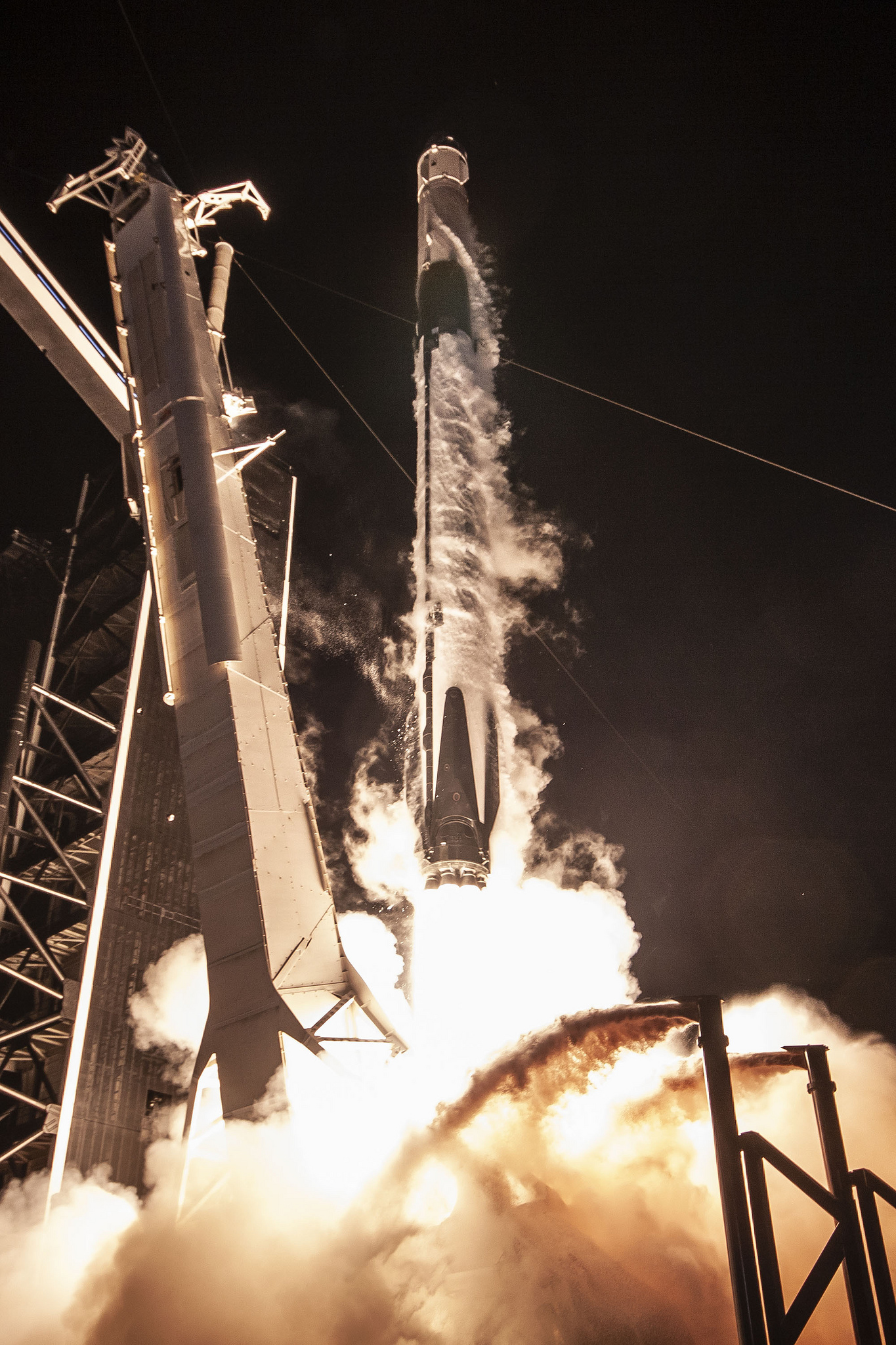
In this close-up shot of the Crew Dragon's liftoff, a fog of liquid oxygen coats the Falcon 9 rocket.
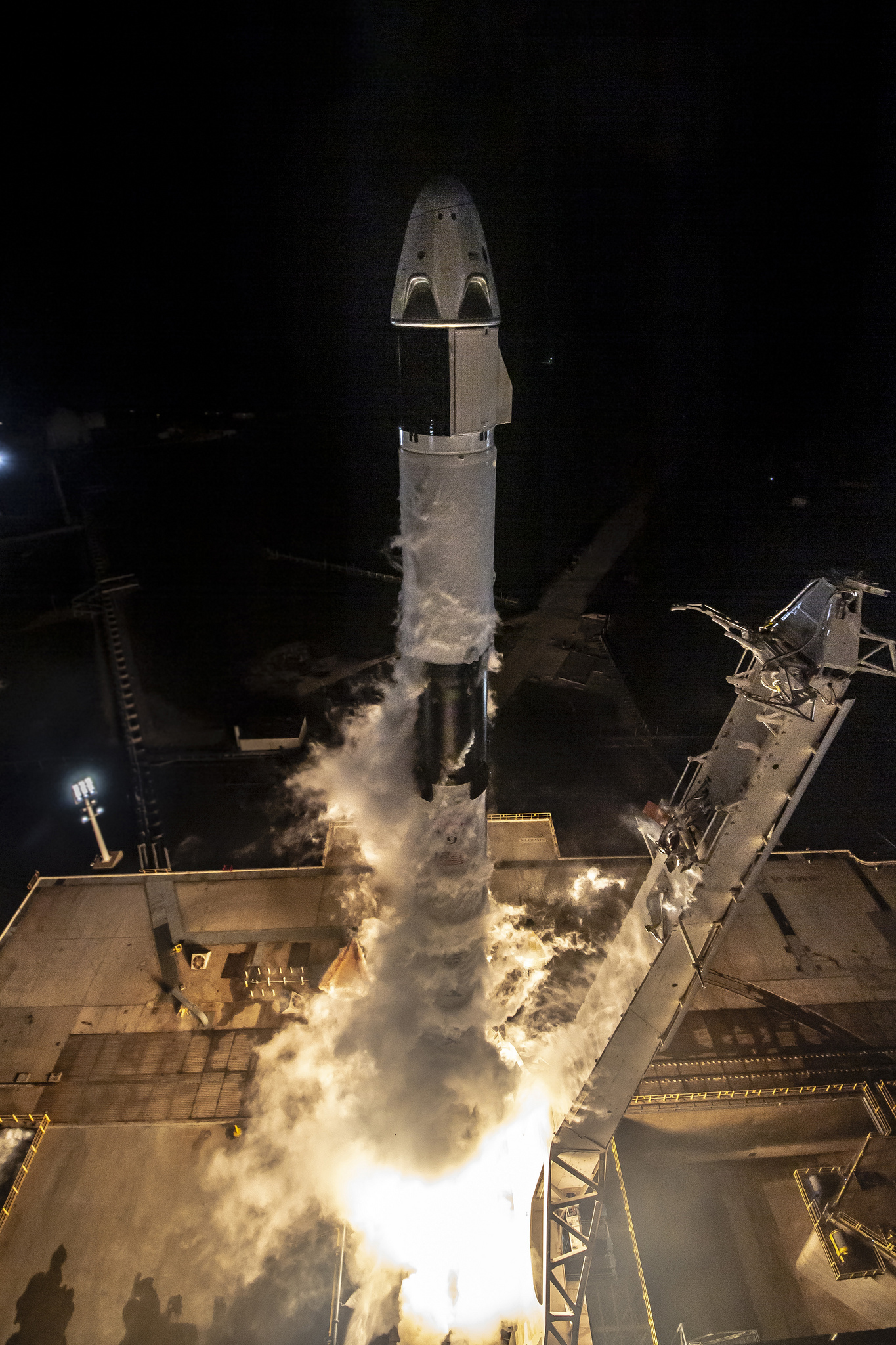
The Crew Dragon spacecraft blasts off on top of a Falcon 9 rocket.
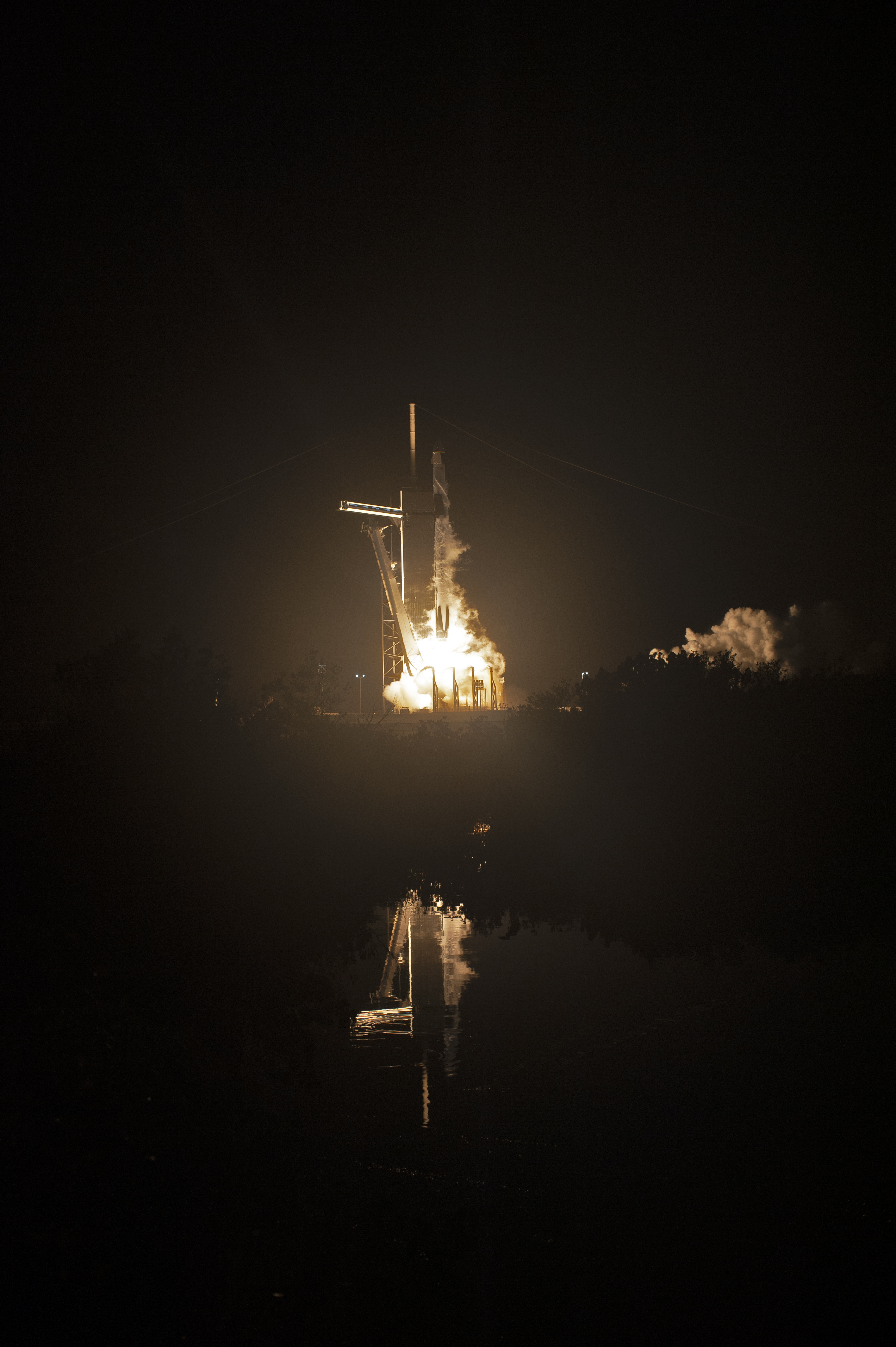
The Falcon 9 rocket's reflection gleams on the surface of the water outside NASA's Kennedy Space Center in Florida.
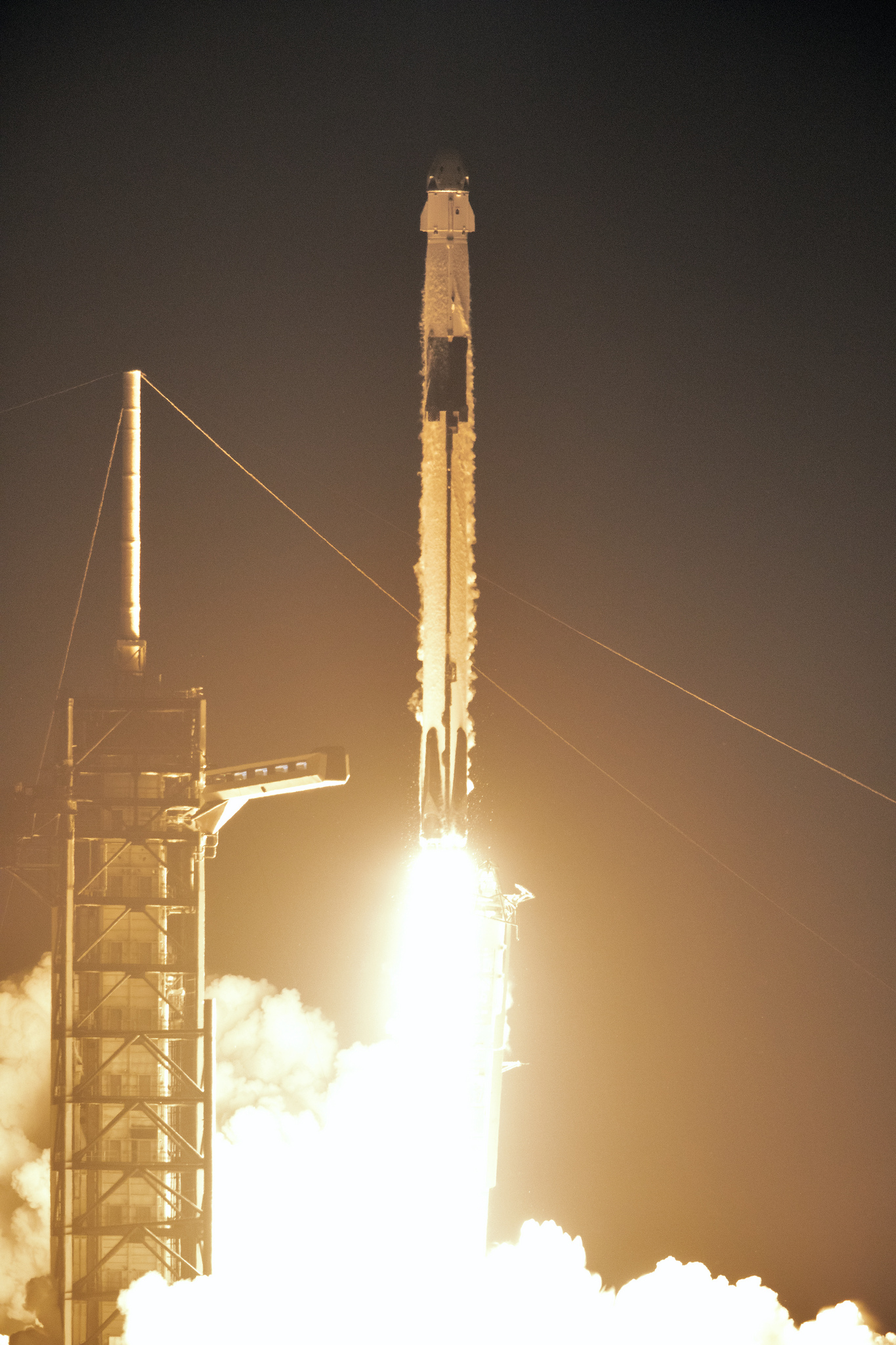
The Falcon 9's rocket plume illuminates the launch support structure in the dark predawn sky as it lifts off from NASA's historic pad 39A at the Kennedy Space Center in Florida.
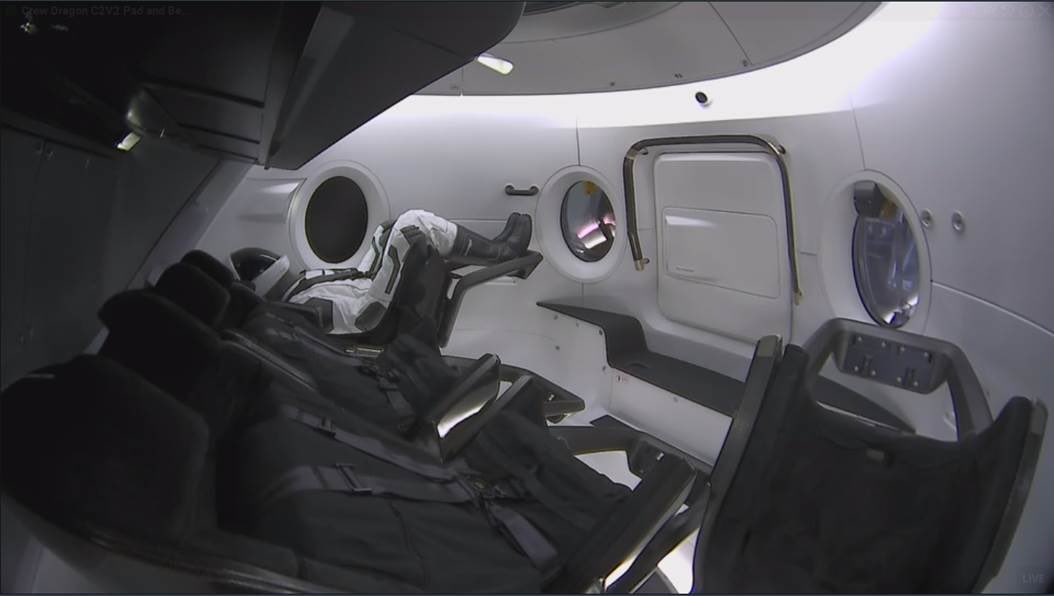
For its first test flight, the Crew Dragon space capsule launched without a crew on board — except for this "dummy," a mannequin named Ripley wearing one of SpaceX's sleek new spacesuits. The so-called "anthropomorphic test dummy," or ATD, is packed with sensors that will collect data that SpaceX will use to plan for future crewed missions.
Full Story: Meet Ripley, SpaceX's Dummy Astronaut Riding on Crew Dragon Test Flight
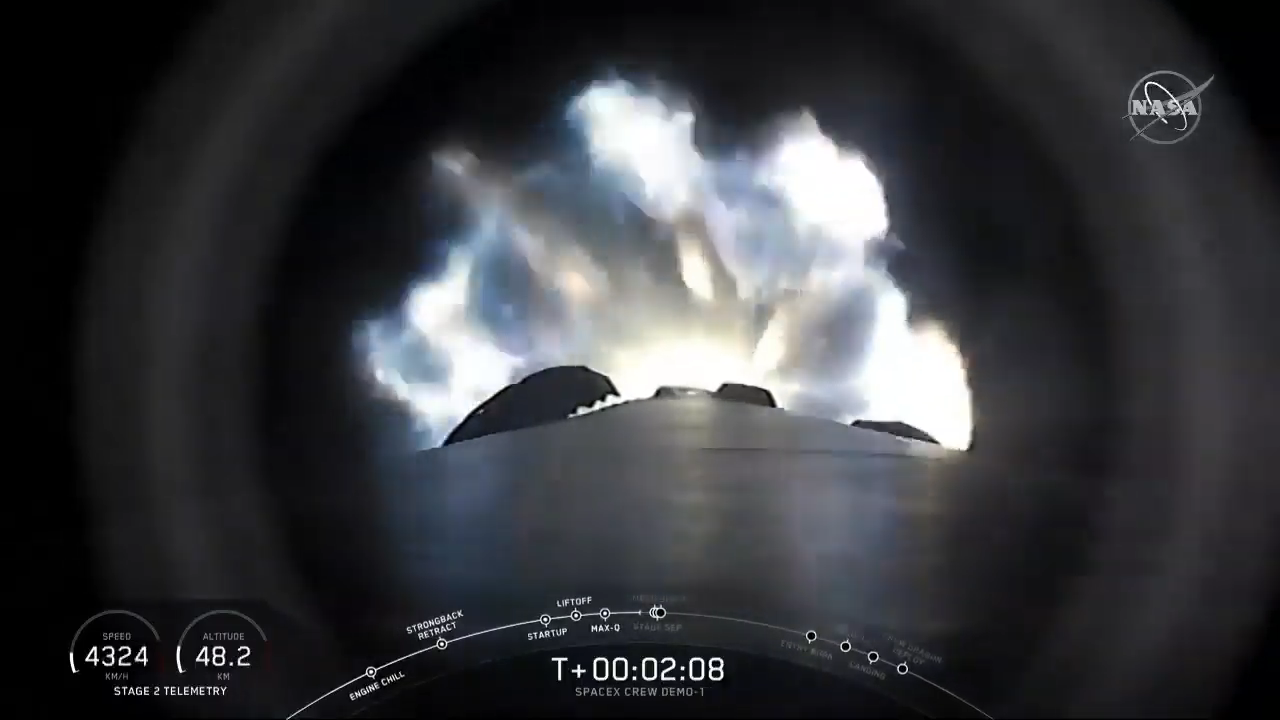
Bright-blue flames spew from the Falcon 9 rocket shortly after it reached "Max Q," or the point in its flight where the aerodynamic force in front of the rocket is at its strongest.
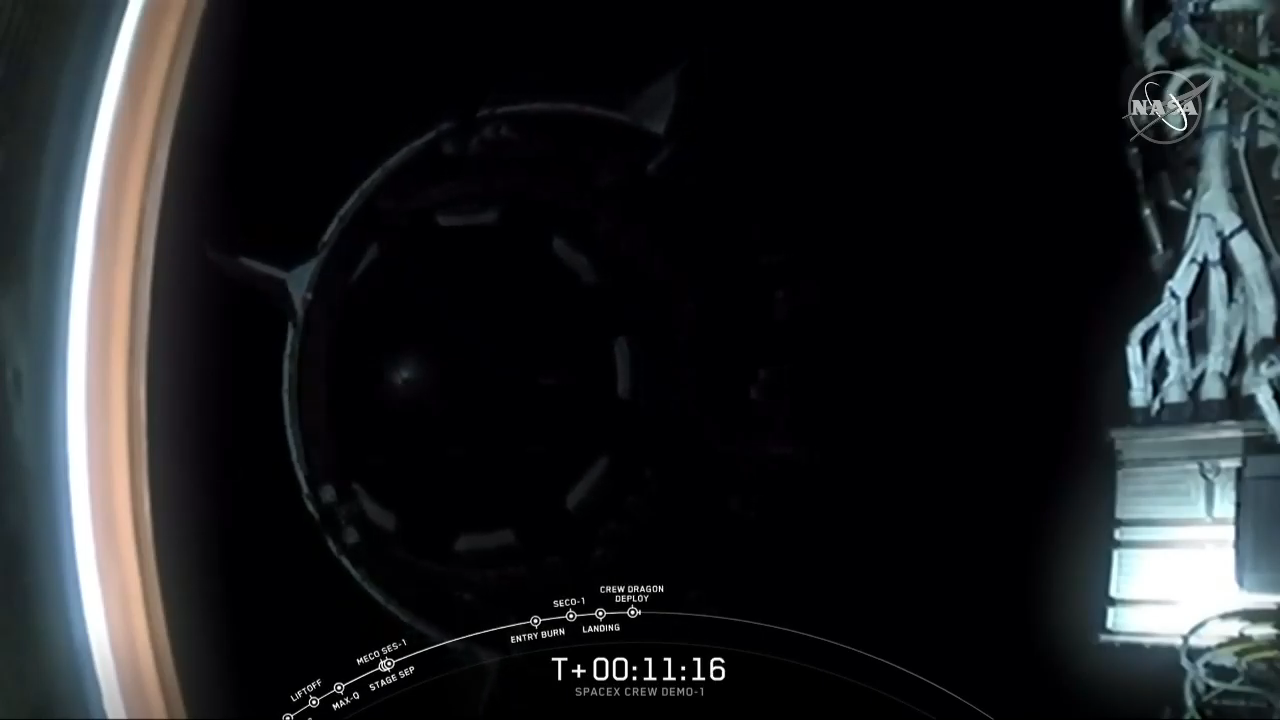
The Crew Dragon successfully deployed into orbit about 11 minutes after liftoff.
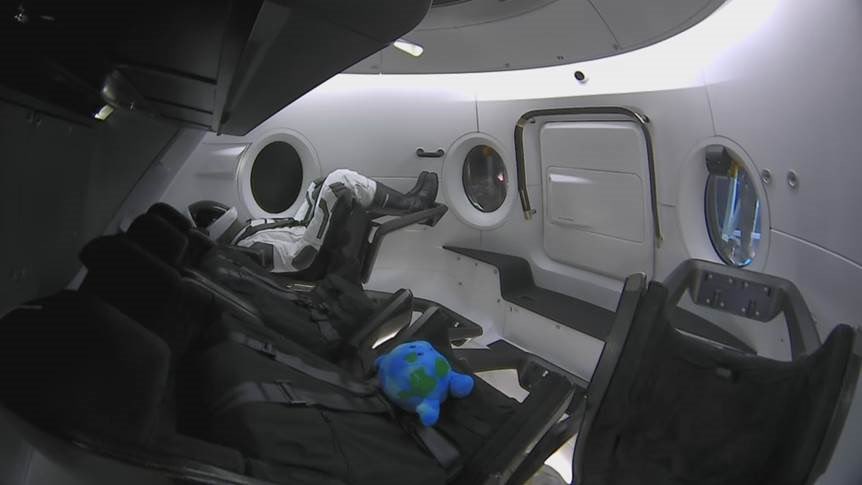
A “Celestial Buddy” joined Ripley the dummy astronaut on the first test flight of SpaceX’s Crew Dragon. The planet Earth plush is the spacecraft's "zero-g indicator," a very low-tech device that floats around freely when the spacecraft experiences weightlessness.
Full Story: SpaceX Adds Adorable 'Zero-G Indicator' Inside the Crew Dragon
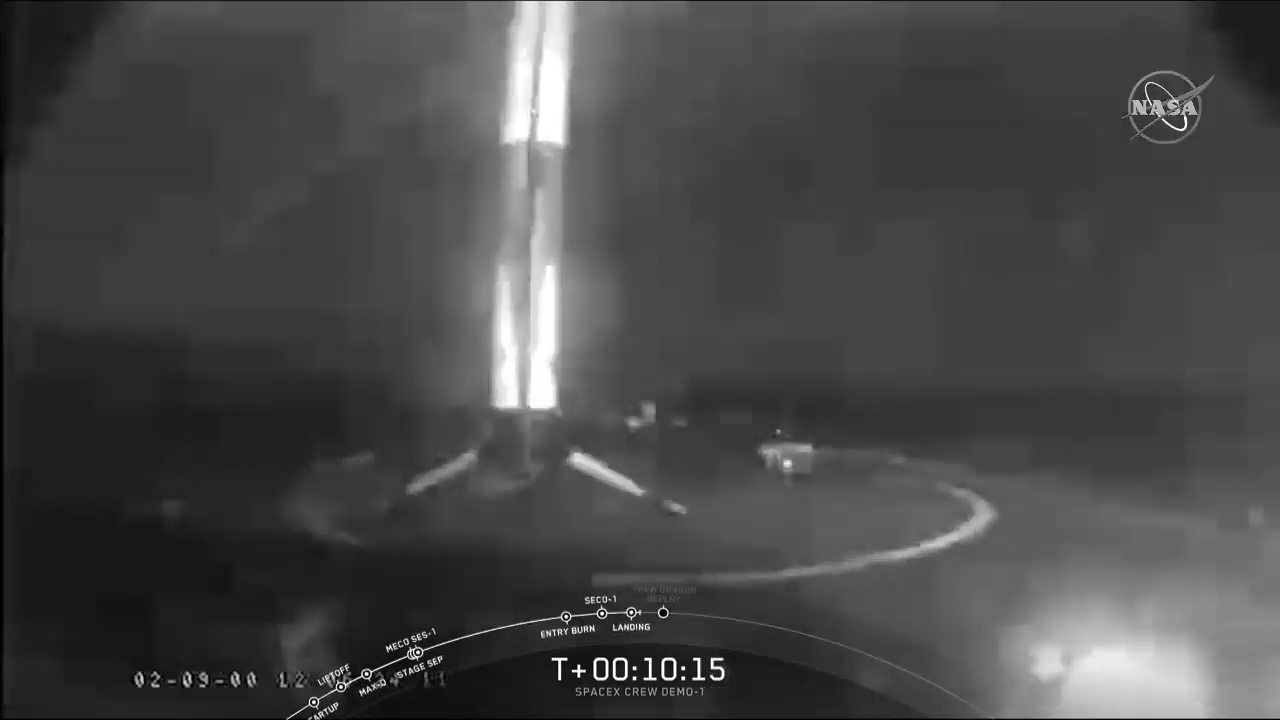
The Falcon 9 rocket booster returned to Earth and landed on SpaceX's drone ship, named "Of Course I Still Love You," which was stationed in the Atlantic Ocean just off the coast of Florida.
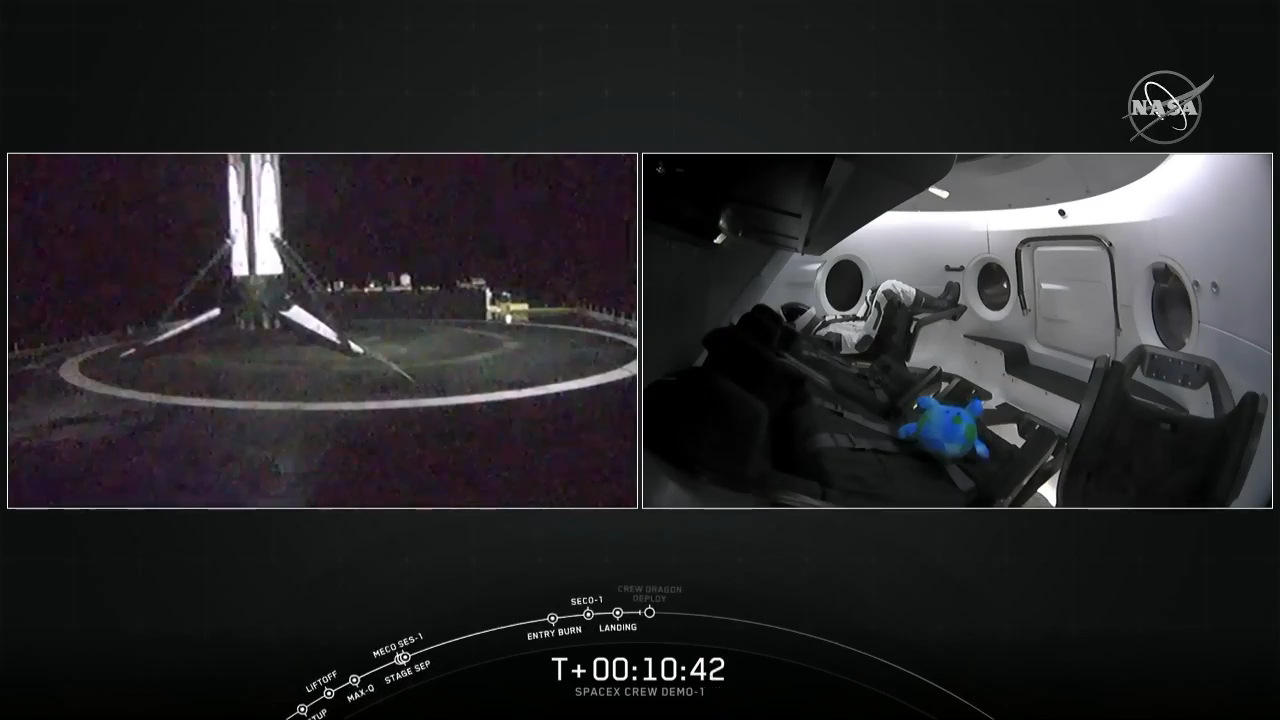
As the Falcon 9 rocket booster stands tall on the drone ship after nailing an upright landing, a view from inside the Crew Dragon spacecraft showed the "zero-g indicator" — a planet plush — beginning to float in microgravity.
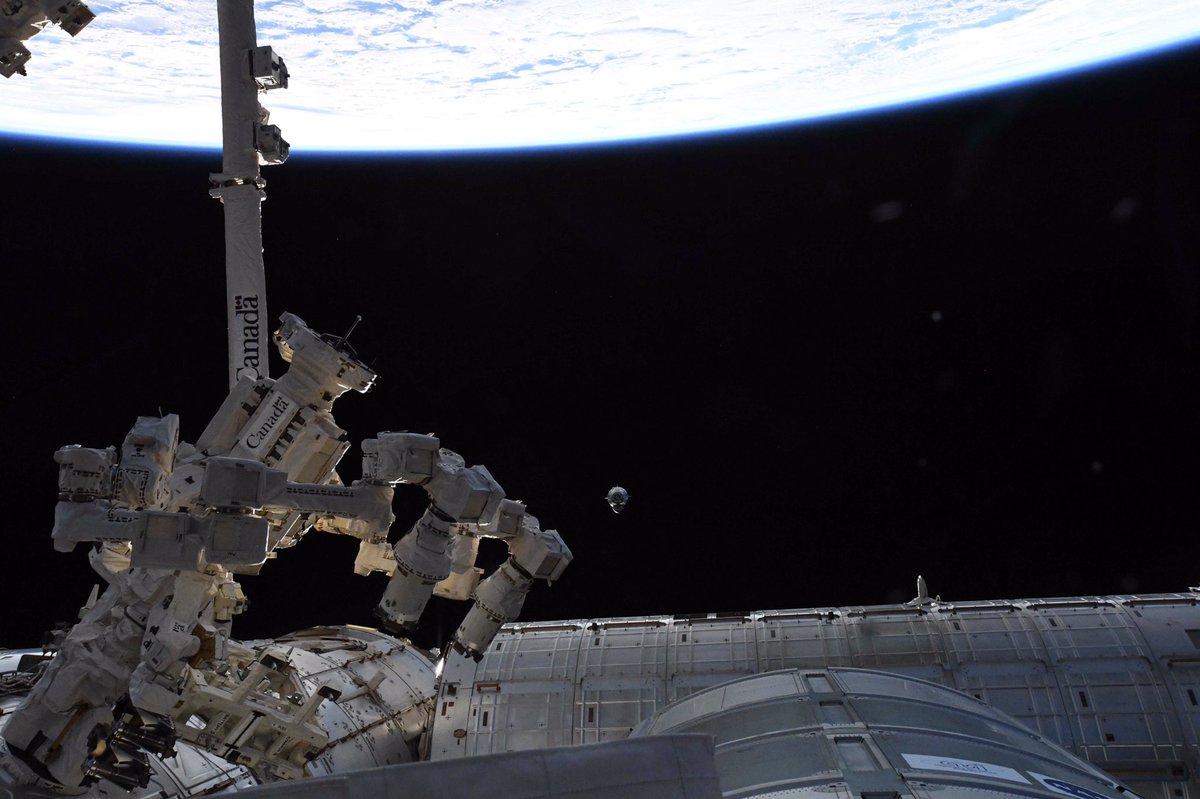
Canadian Space Agency astronaut David Saint-Jacques captured this photo of the Crew Dragon as it approached the International Space Station on March 3, 2019.
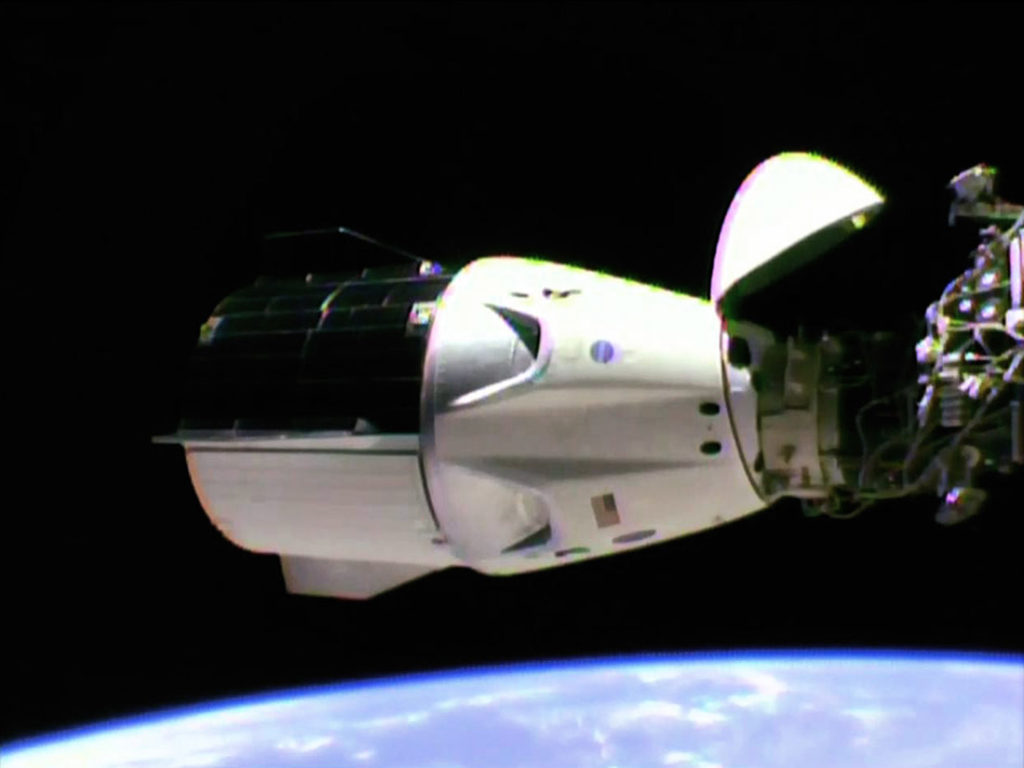
A view from one of the International Space Station's external cameras shows the Crew Dragon docked outside the Harmony module.
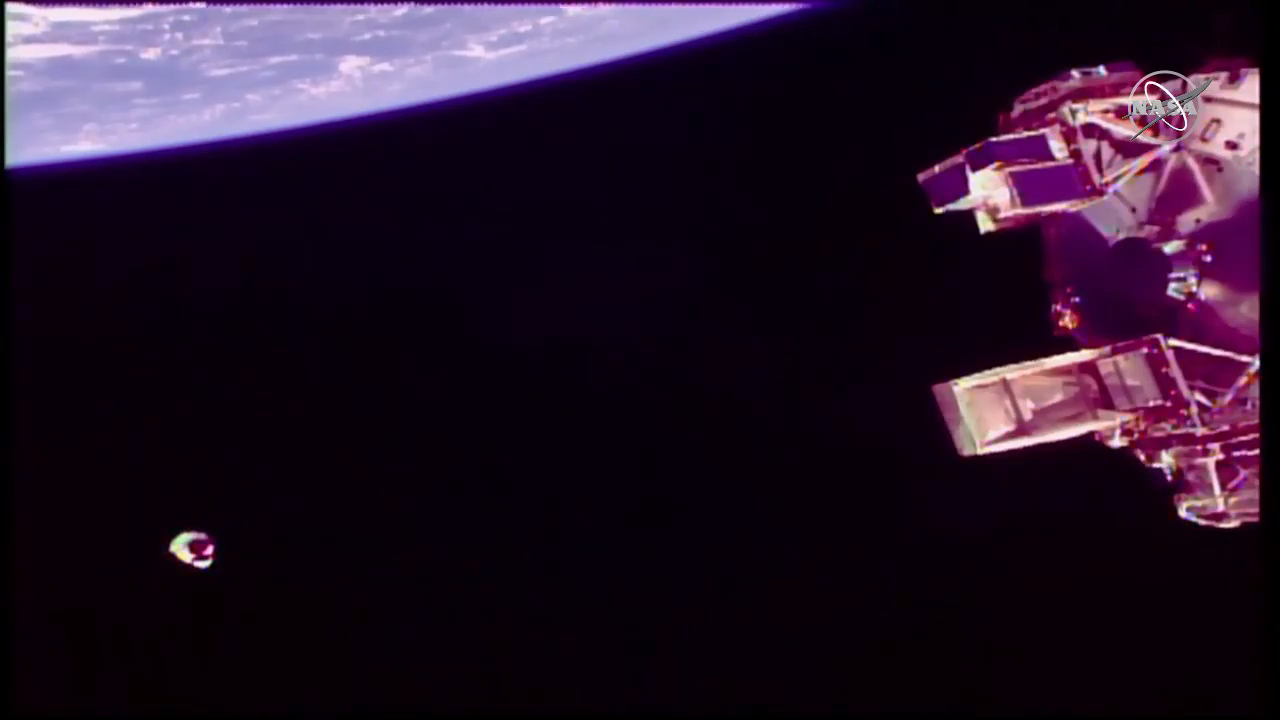
The Crew Dragon spacecraft is seen approaching the International Space Station's in this view from one of the station's external cameras.
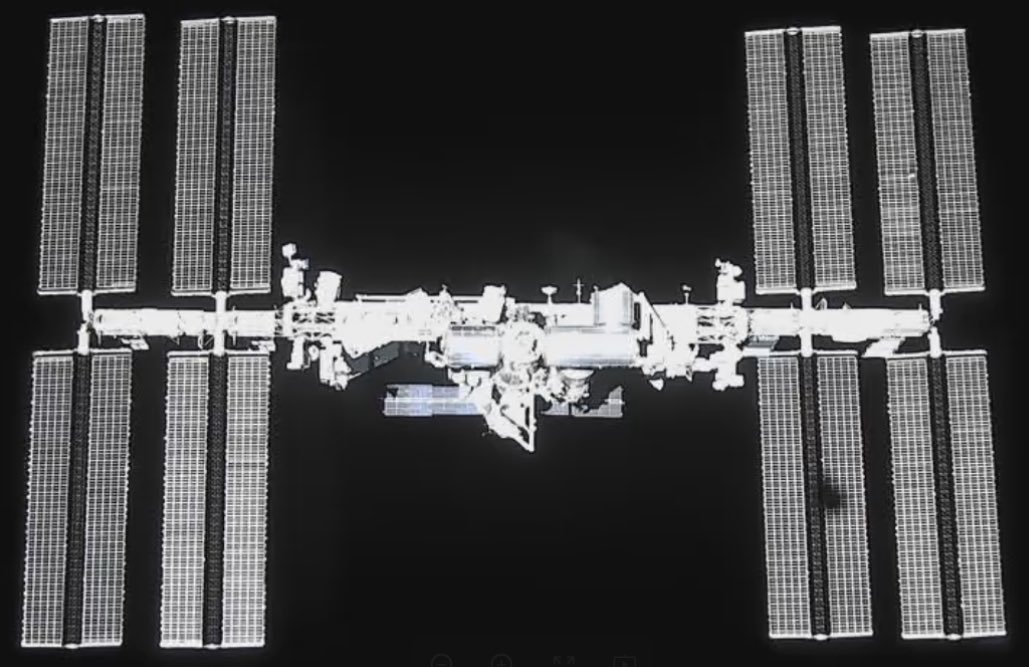
Before it docked with the International Space Station, the Crew Dragon saw its shadow on the station's solar arrays.
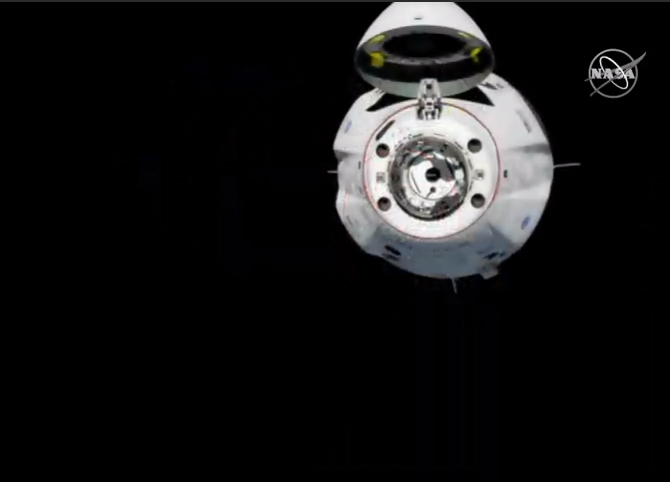
The Dragon opened its nose cone to prepare for docking with the International Space Station.

The Crew Dragon approaches the International Space Station for docking (while the Canadarm2 robotic arm photobombs in the foreground).
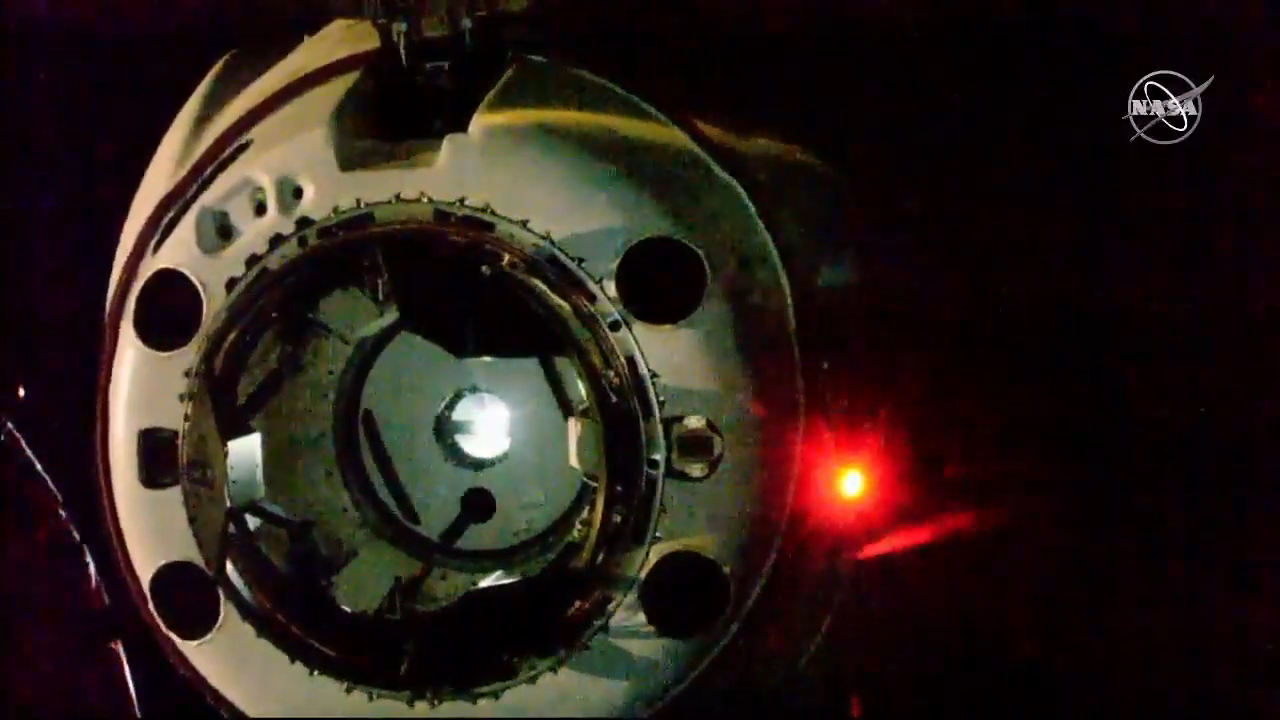
One of the space station's external cameras captured this view of the Dragon just moments before it docked at the station's Harmony module.
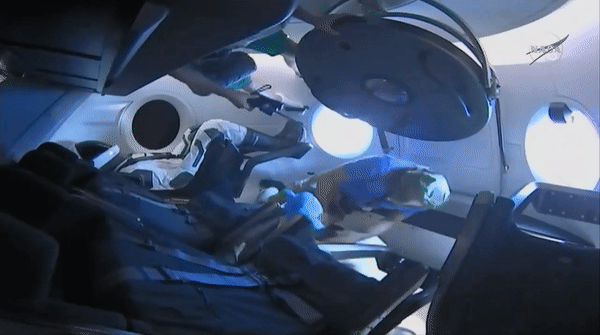
The "zero-g indicator" gets a bump from CSA astronaut David Saint-Jacques that sends it tumbling around the Crew Dragon.
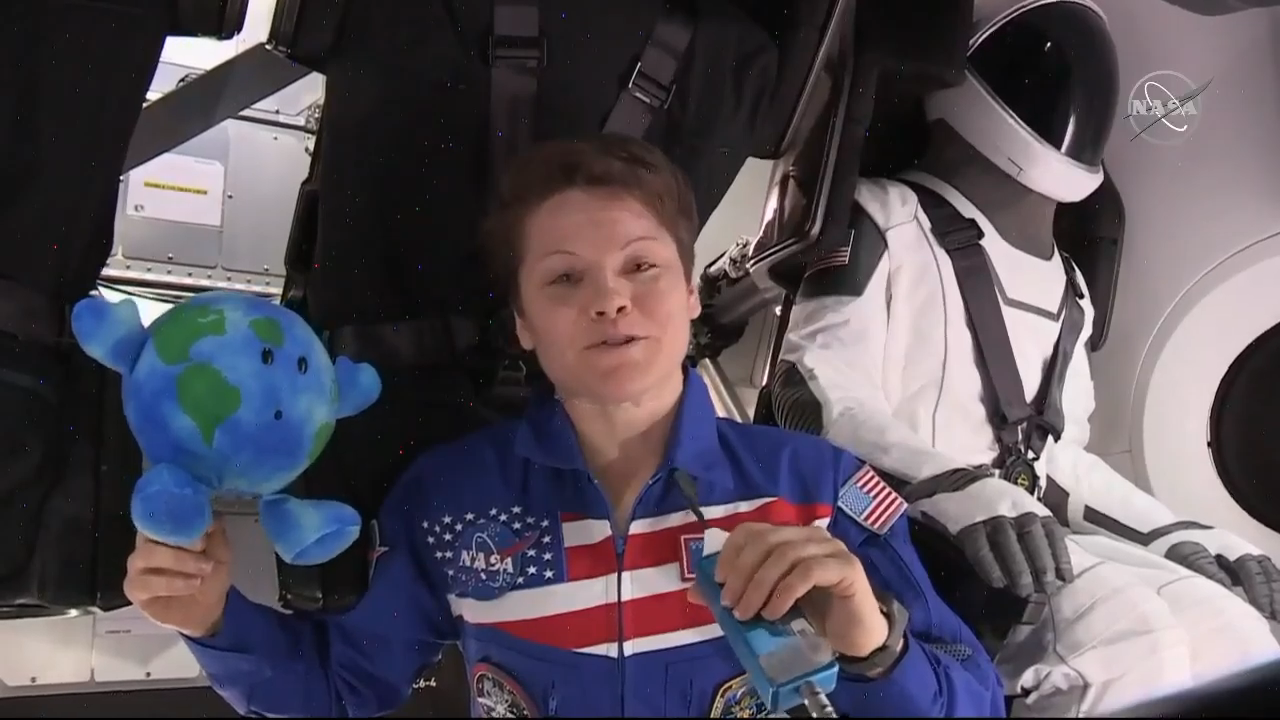
NASA astronaut Anne McClain poses with Ripley and the Celestial Buddies "zero-g indicator" inside the Crew Dragon.
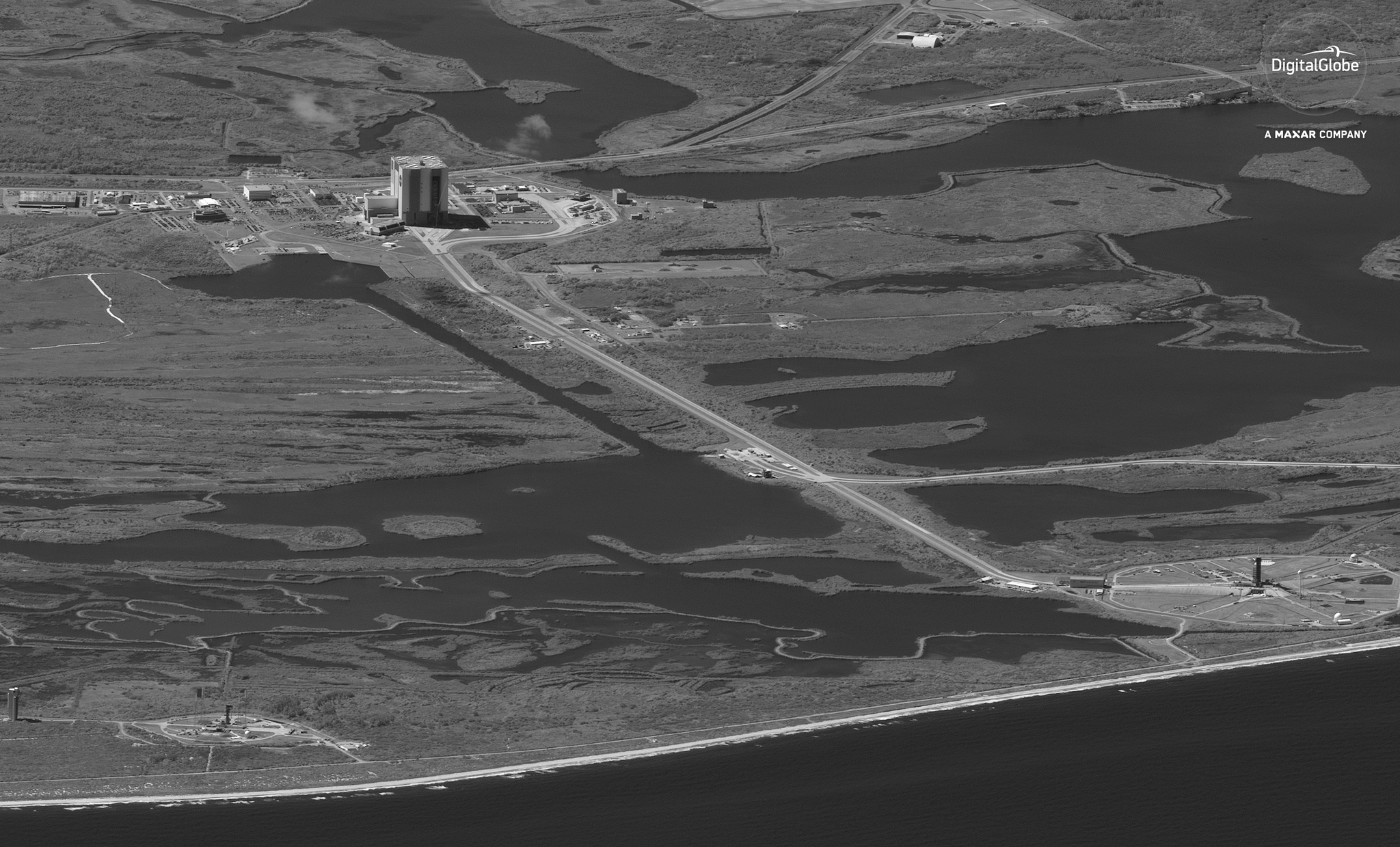
Even satellites tracked SpaceX's Crew Dragon and Falcon 9 rocket. Here's a view from DigitalGlobe's WorldView-1 satellite of the Crew Dragon and its booster rolling out to Launch Pad 39A at NASA's Kennedy Space Center in Cape Canaveral, Florida on Feb. 28, 2019. Read more in our full story here.
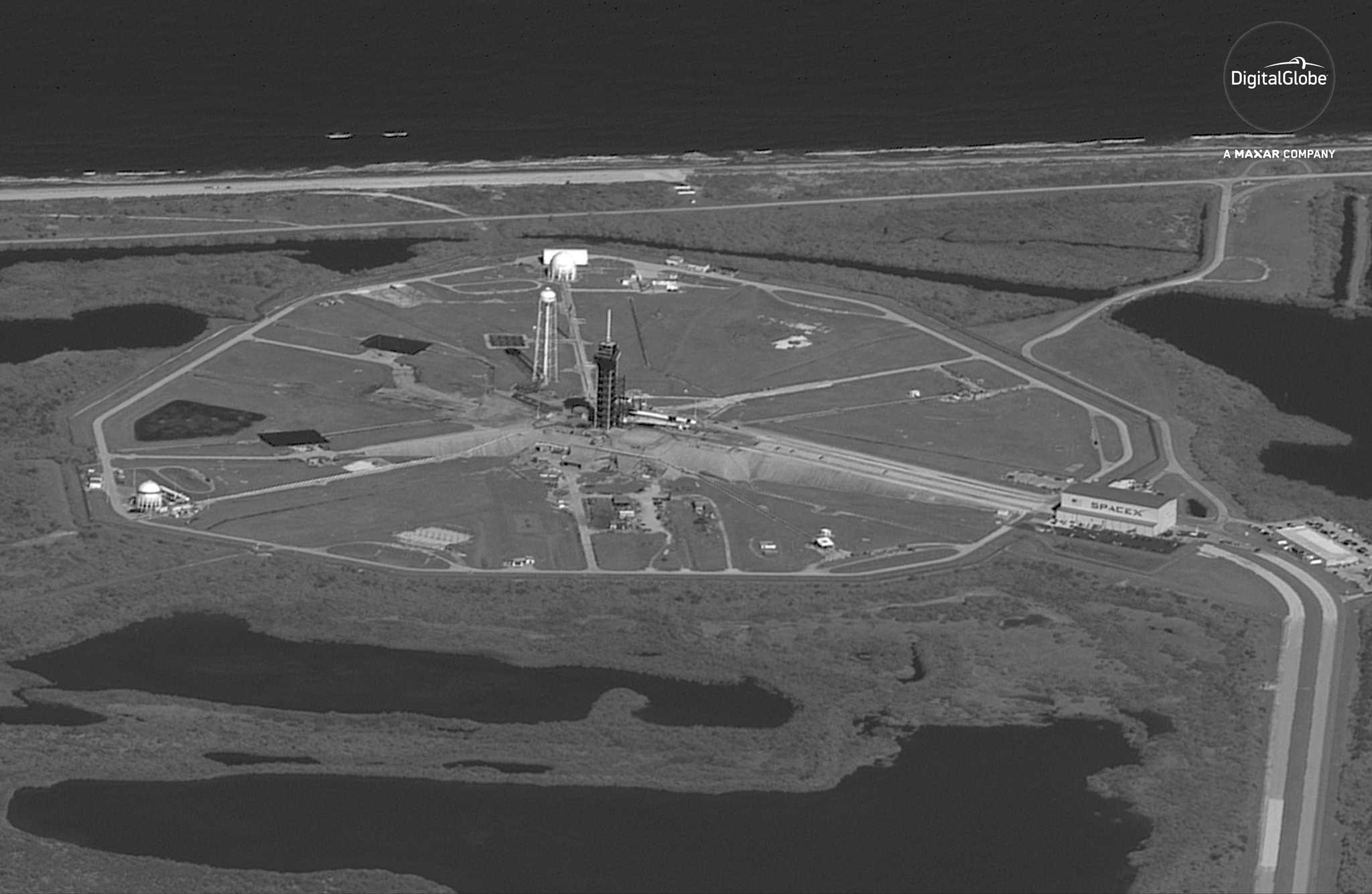
Another WorldView-1 satellite view captured this view of SpaceX's Crew Dragon and Falcon 9 rocket as they rolled out to the pad on Feb. 28, 2019. The rocket is still horizontal on Pad 39A of NASA's Kennedy Space Center. It appears as thin white line extending to the right of the launch pad. The larger black dash is denotes the meeting point of the first and second stages. The smaller black area is the actual Crew Dragon capsule.
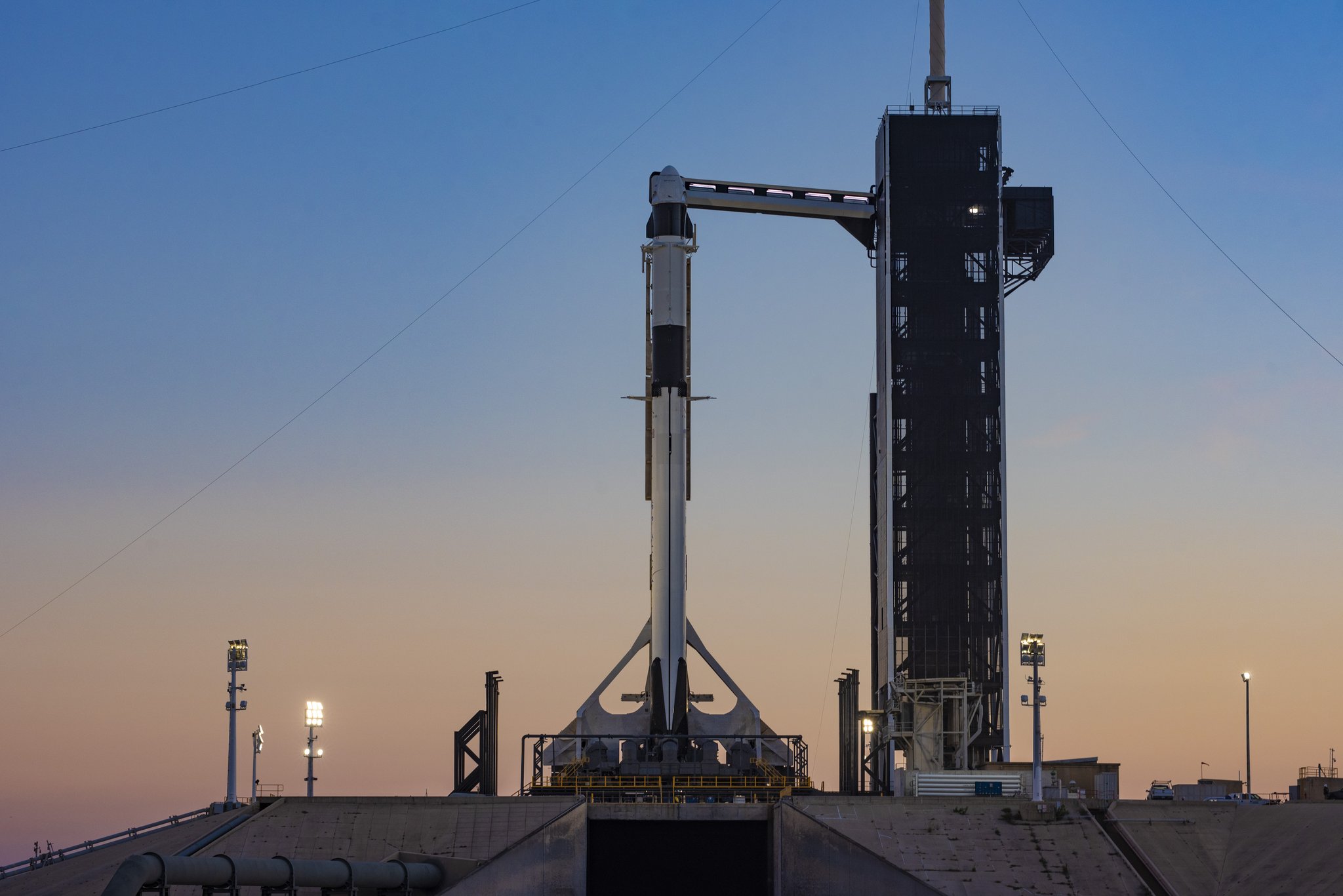
The Falcon 9 rocket stands tall on the launchpad with the Crew Dragon spacecraft on top after it was transported it from the horizontal integration facility at NASA's Kennedy Space Center in Florida.
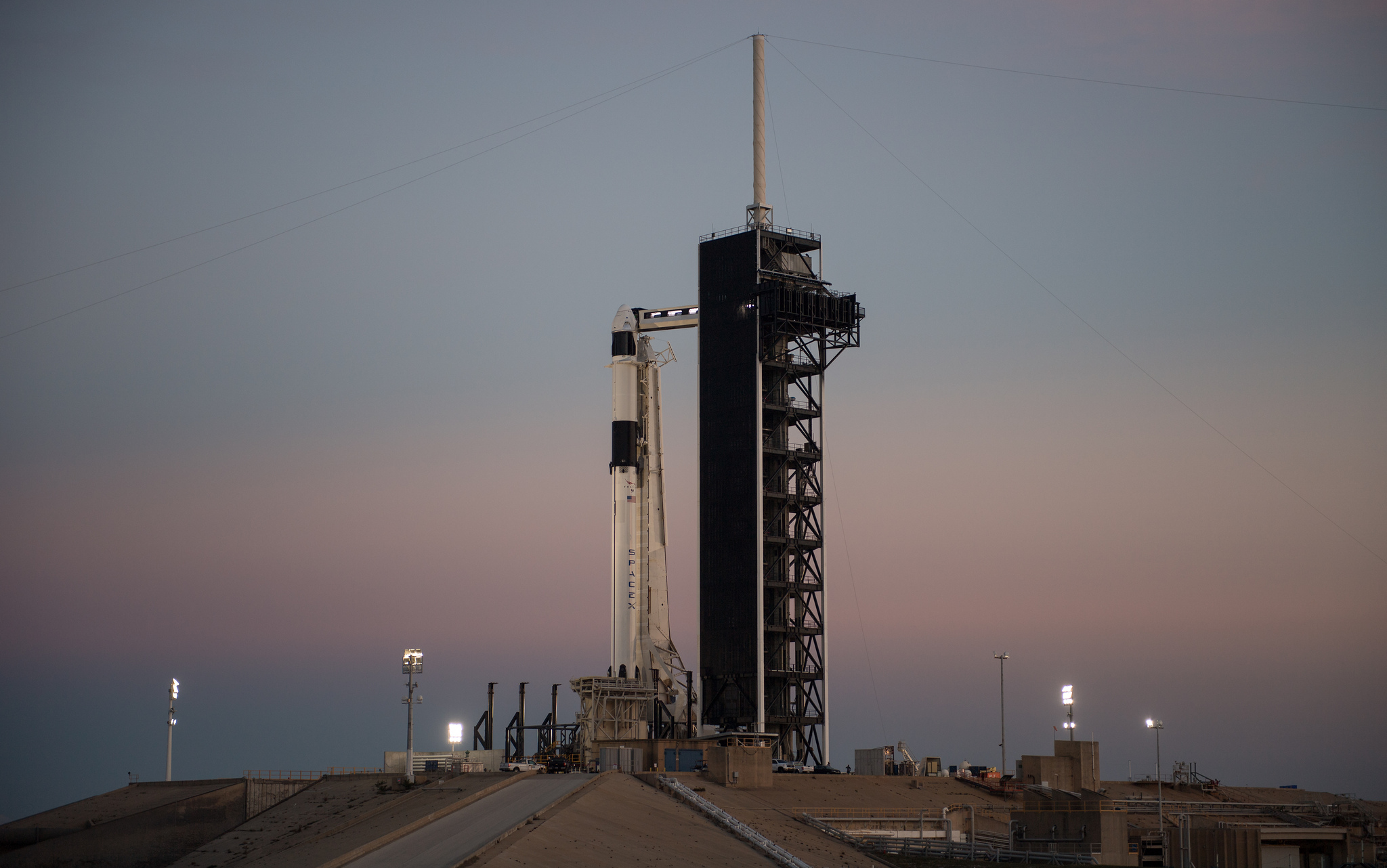
In this photo taken at dusk on Feb. 28, 2019, SpaceX's transporter erector raises the Falcon 9 rocket to a vertical position on Pad 39A at NASA's Kennedy Space Center in Florida. It was transported from the horizontal integration facility earlier that day.
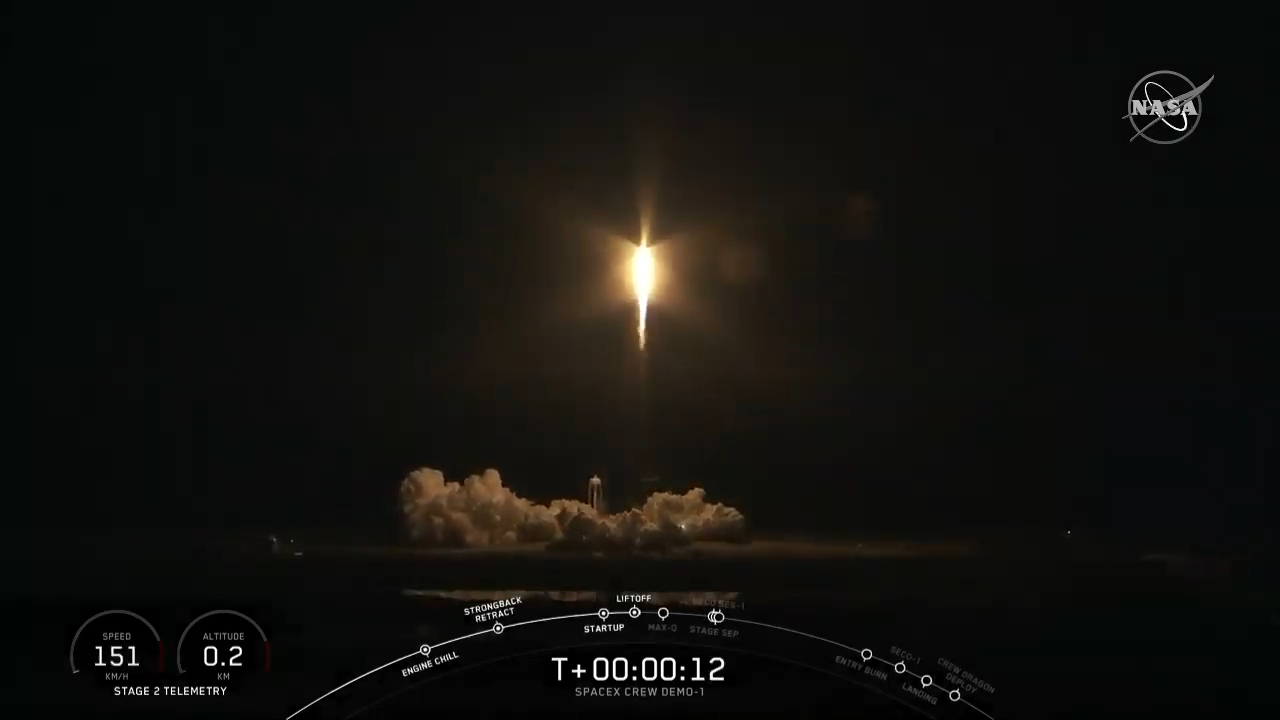
The Falcon 9 rocket and Crew Dragon spacecraft lift off from NASA's historic Launch Complex 39A at the Kennedy Space Center in Florida.
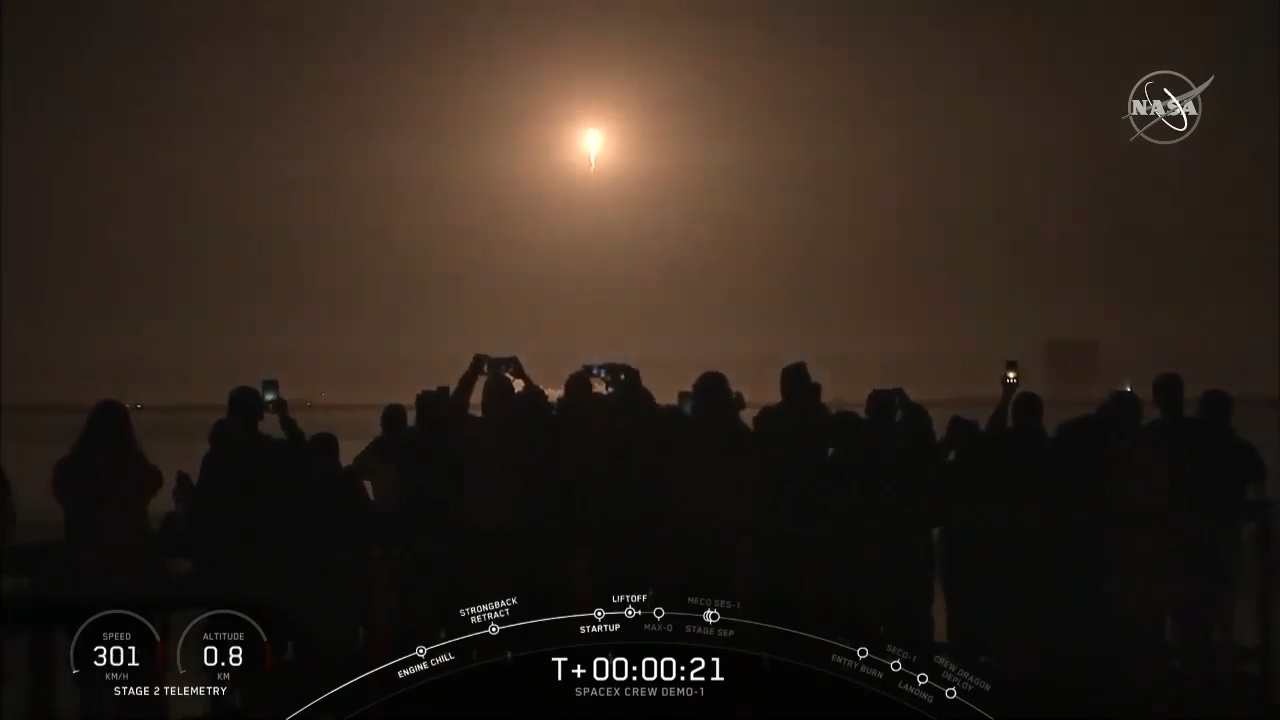
A crowd of spectators watches the launch of SpaceX's Crew Dragon Demo-1 mission at Kennedy Space Center in Florida.
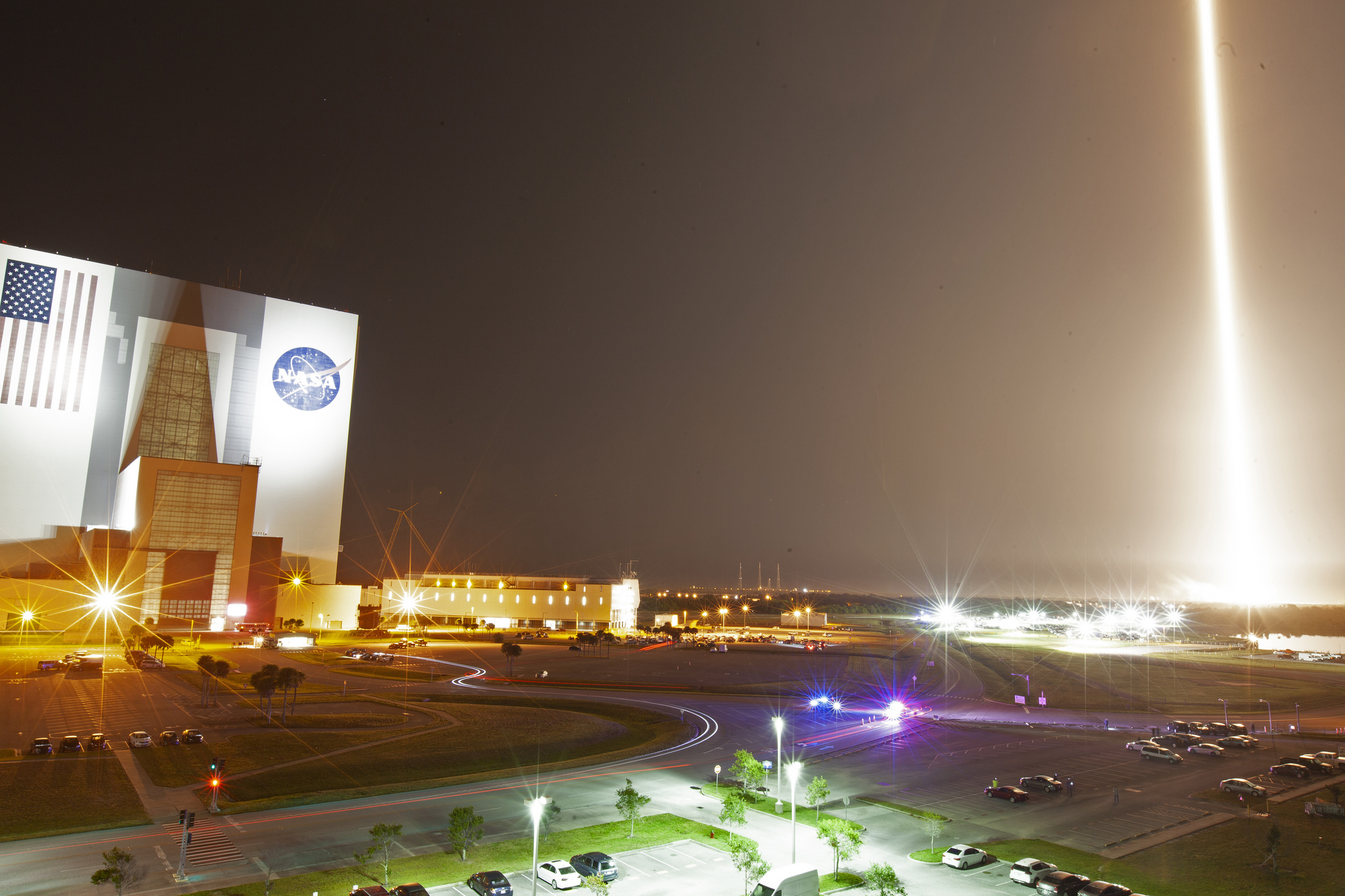
A long-exposure shot shows the Falcon 9 rocket rising into the sky behind the Vehicle Assembly Building at NASA's Kennedy Space Center in Florida.
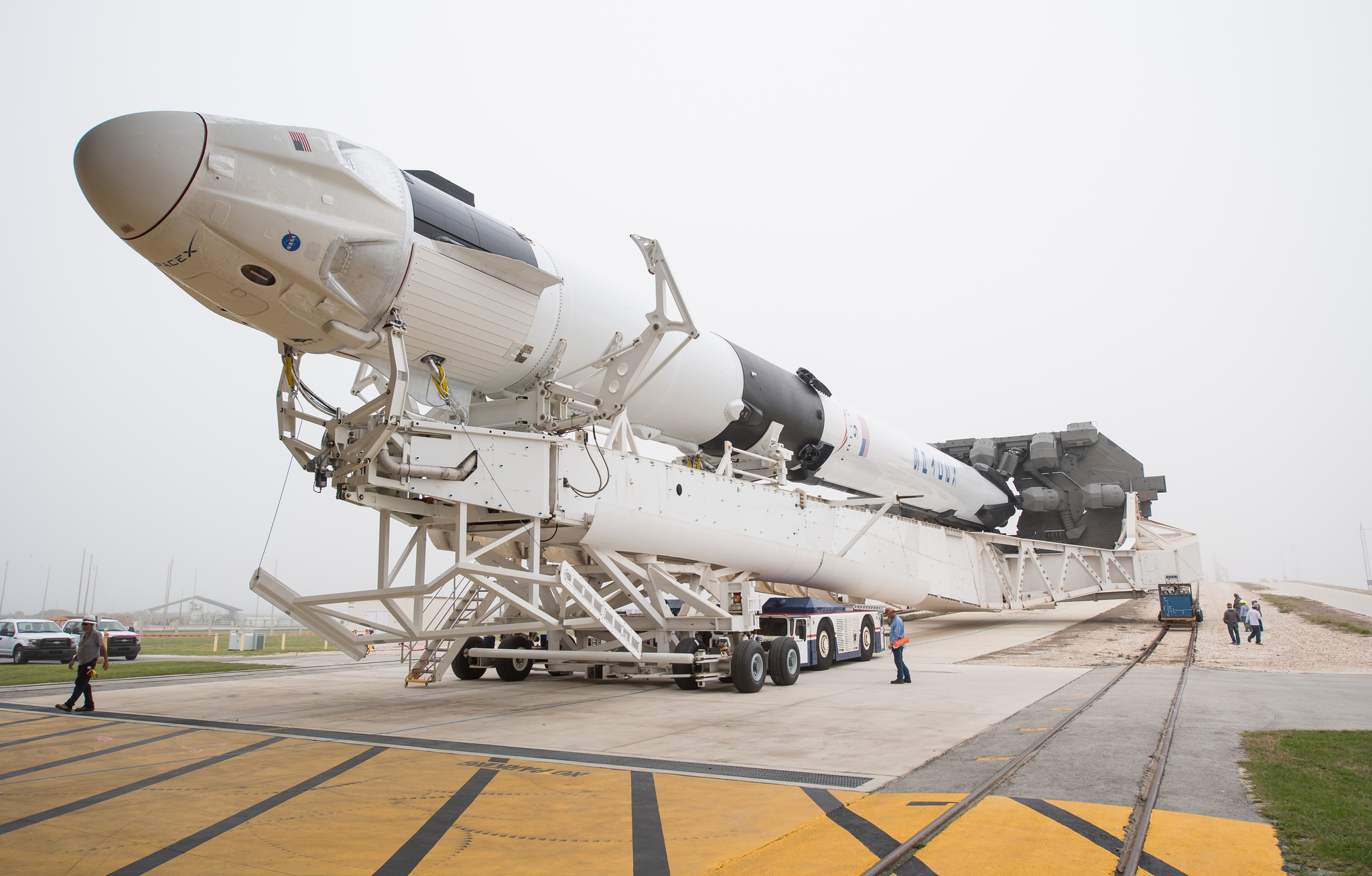
A Falcon 9 rocket, with the Crew Dragon space capsule on top, rolls out from the horizontal integration facility at Kennedy Space Center and begins to make its way toward the launch pad on Feb. 28, 2019.
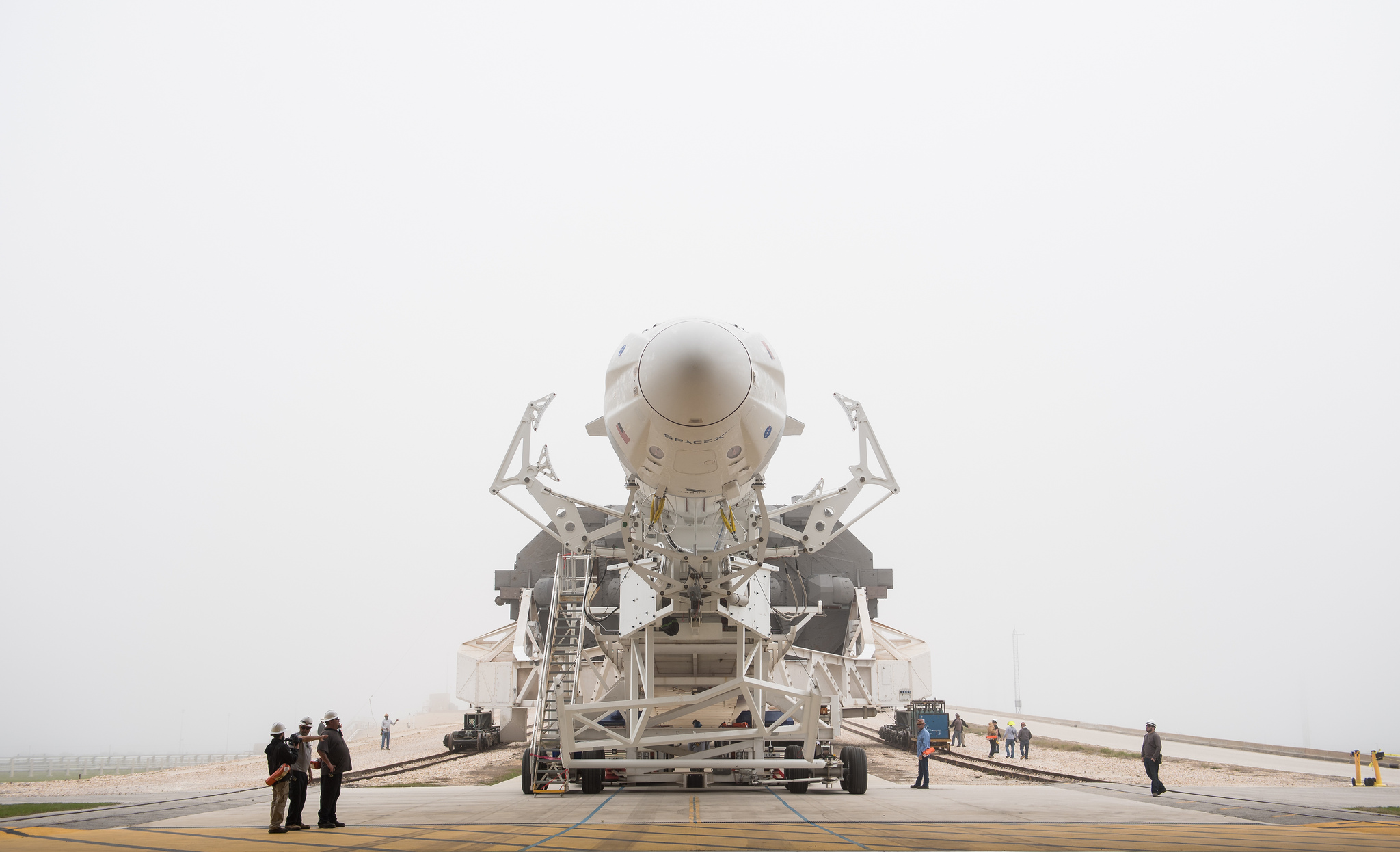
A photo taken from the top of the Falcon 9 rocket provides a clear view of the Crew Dragon space capsule. When this photo was taken, the Falcon 9 was being rolled out from the horizontal integration facility at Kennedy Space Center toward the launch pad on Feb. 28, 2019.
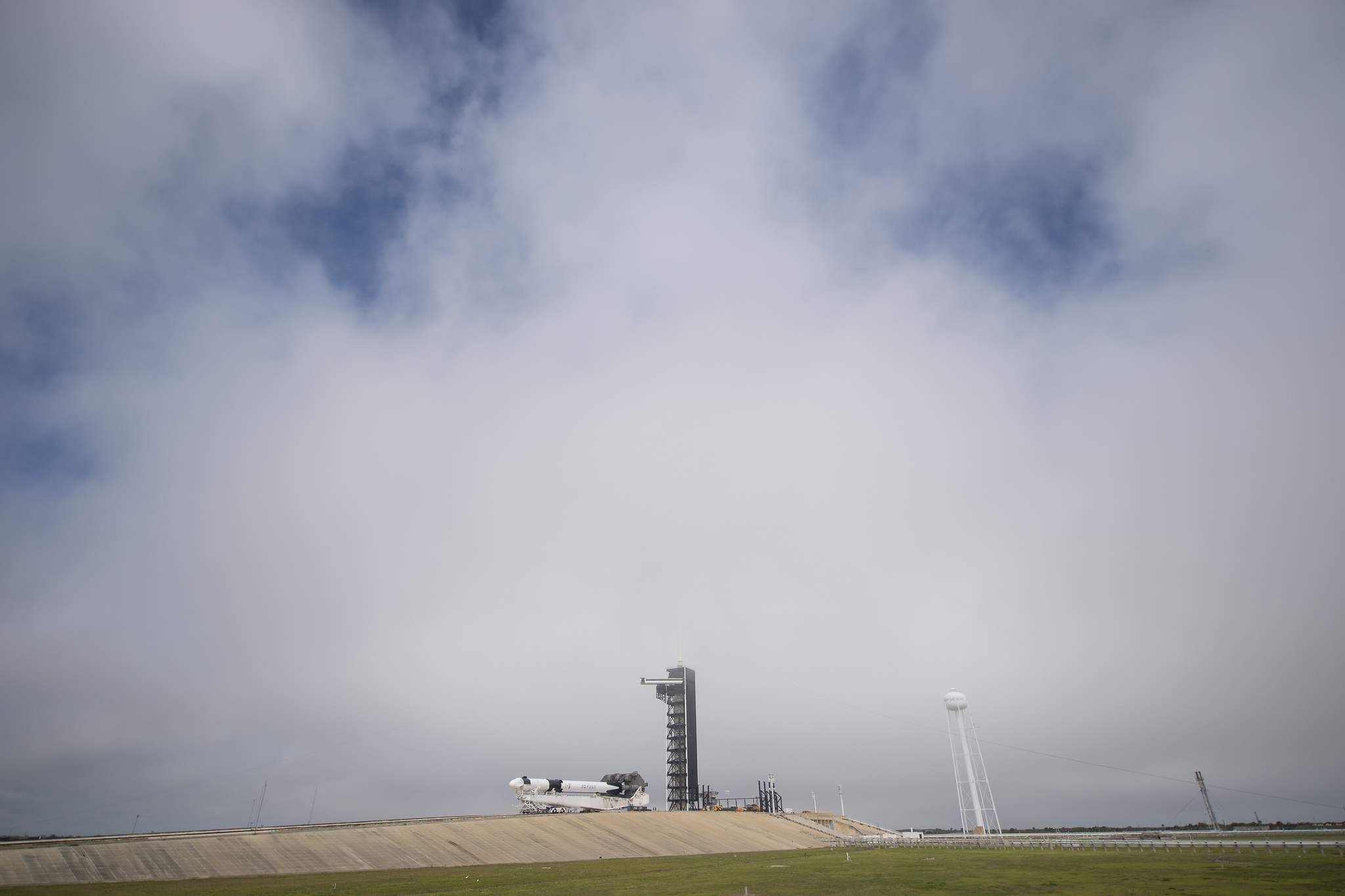
Clouds roll in over Kennedy Space Center in Florida as the Falcon 9 rocket and Crew Dragon arrive at NASA's historic Launch Complex 39A, on Feb. 28, 2019.
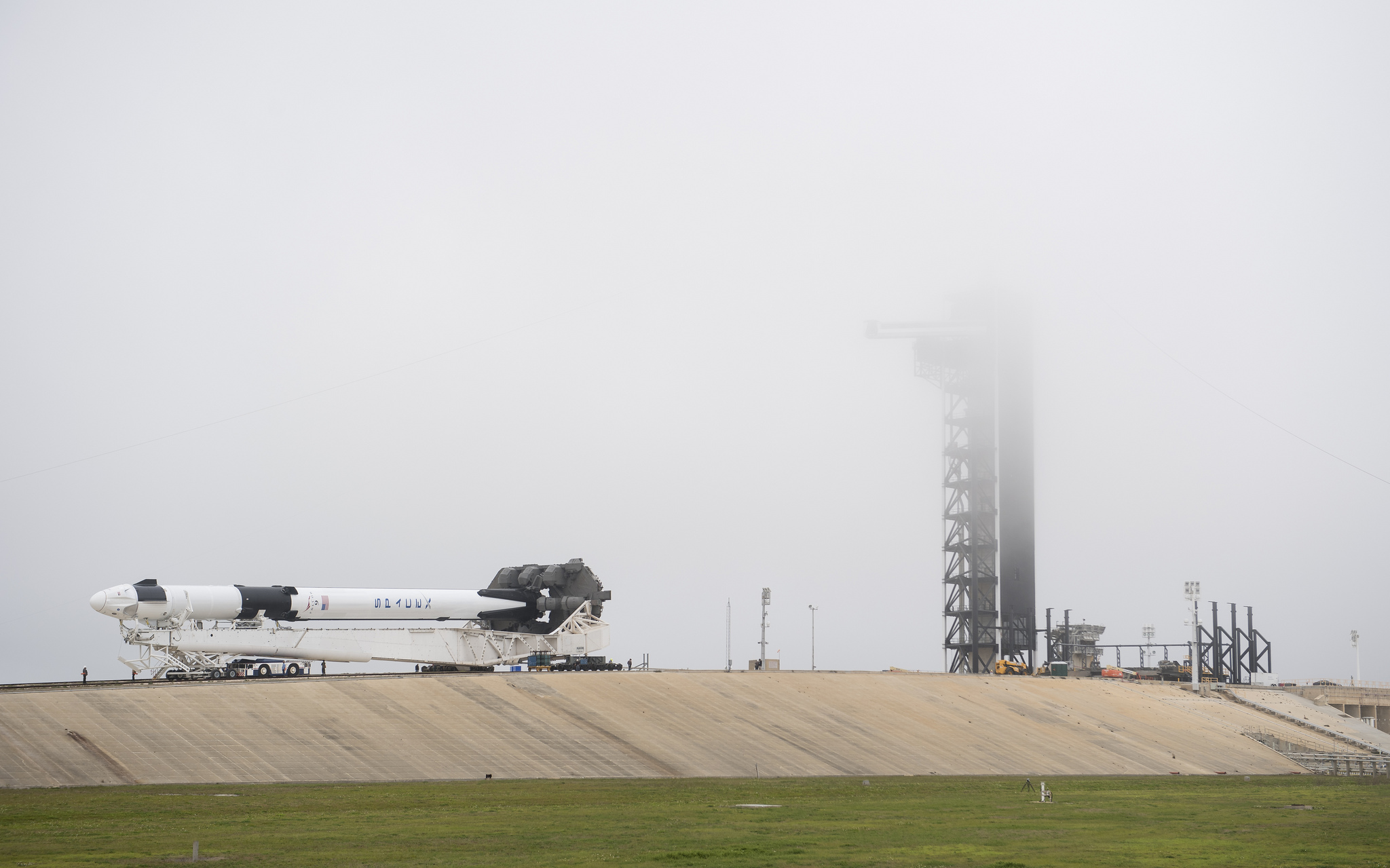
The SpaceX Falcon 9 rocket and Crew Dragon spacecraft roll out to NASA's historic Launch Complex 39A at the Kennedy Space Center in Florida on Feb. 28, 2019.
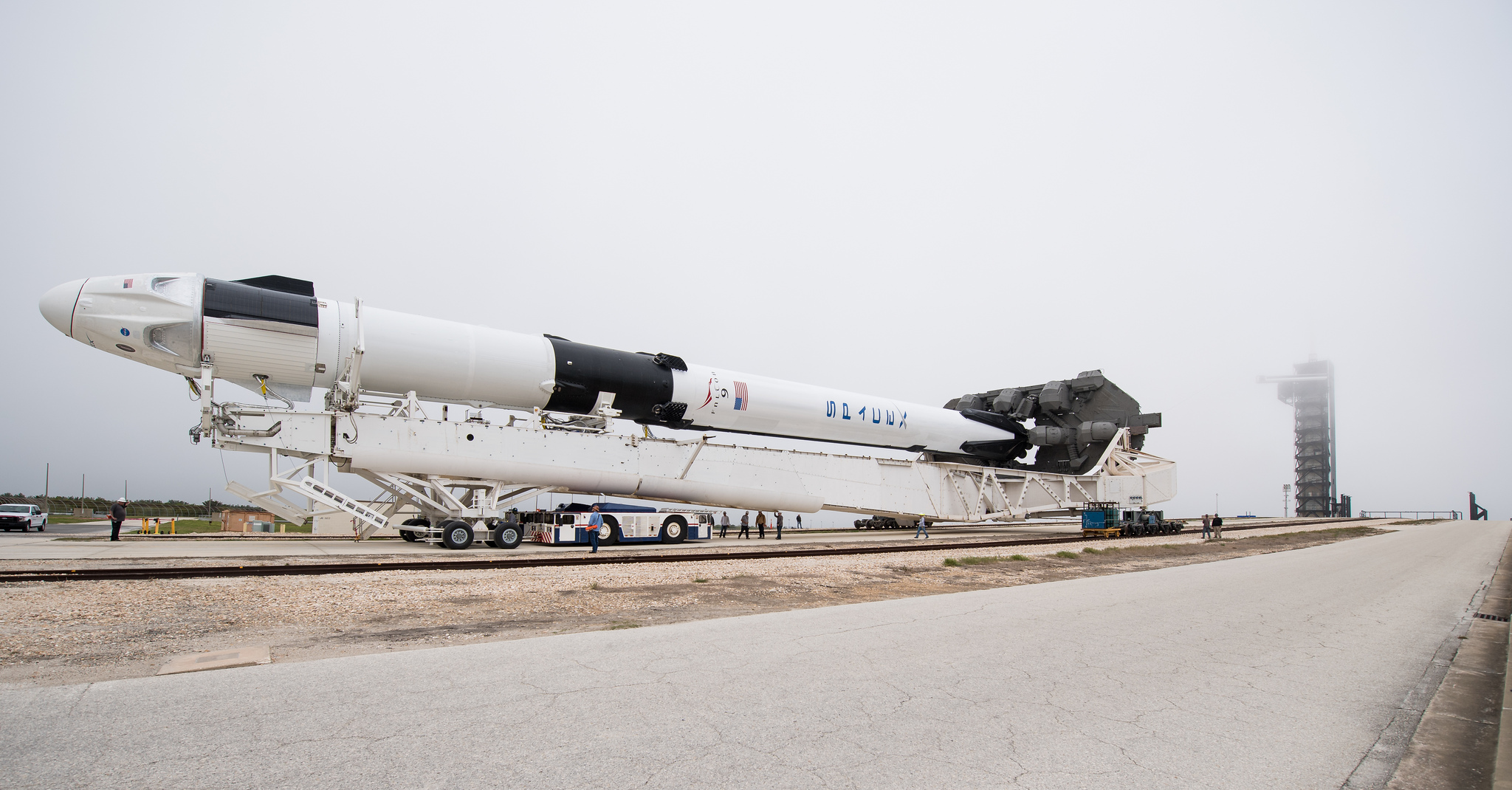
Workers monitor the transporter-erector vehicle as it rolls the Falcon 9 rocket and Crew Dragon spacecraft toward the launch pad.
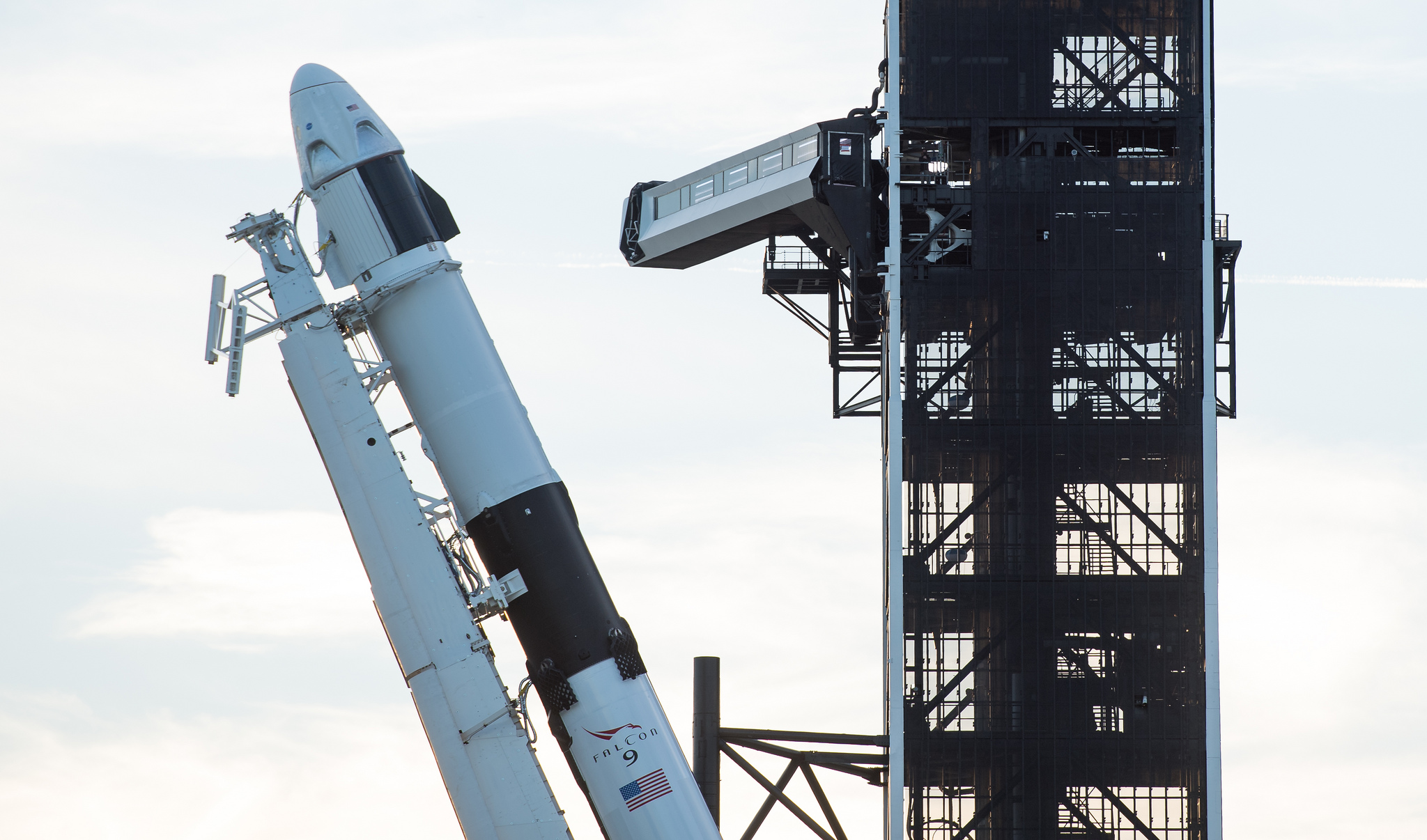
The transporter erector hoists the Falcon 9 rocket up to a vertical position at Pad 39A on Feb. 28, 2019.
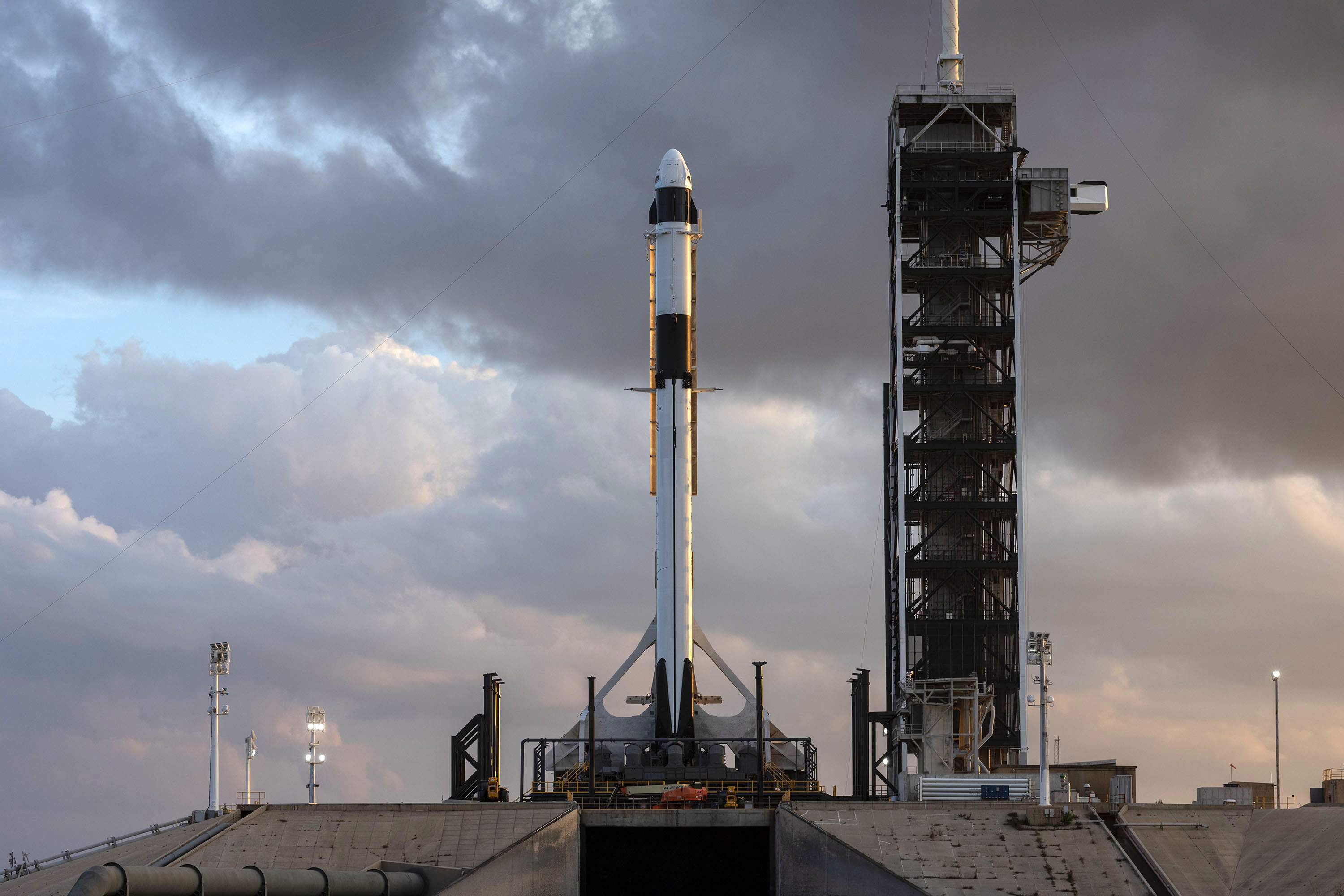
SpaceX's first Crew Dragon spacecraft and its Falcon 9 rocket on Launch Pad 39A of NASA's Kennedy Space Center in Cape Canaveral, Florida.
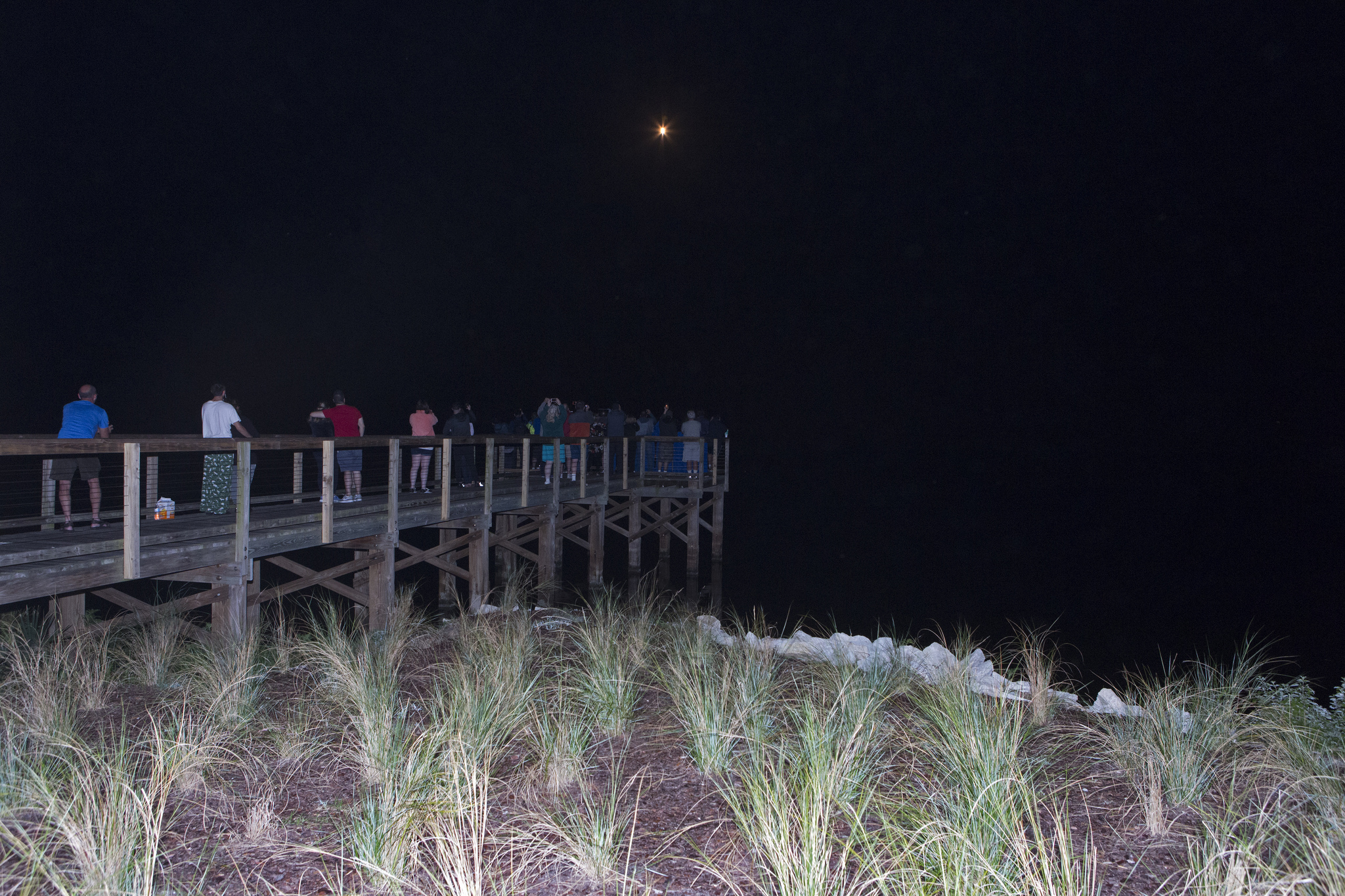
A crowd of spectators watches the launch of SpaceX's Crew Dragon Demo-1 mission.
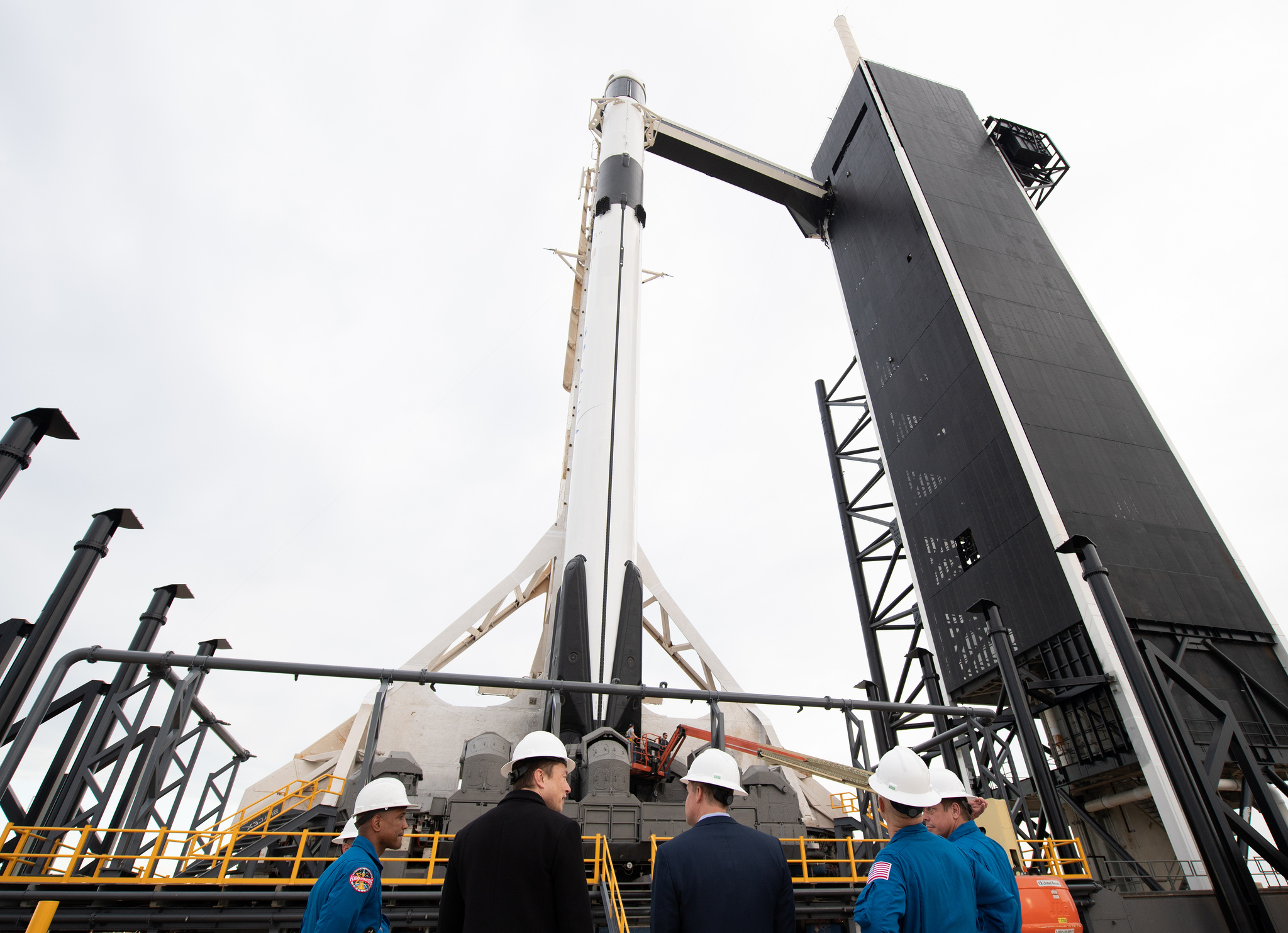
SpaceX CEO Elon Musk and NASA Administrator Jim Bridenstine stand before the Falcon 9 rocket and Crew Dragon at Launch Complex 39A along with NASA astronauts Mike Hopkins, Victor Glover, Doug Hurley and Bob Behnken.
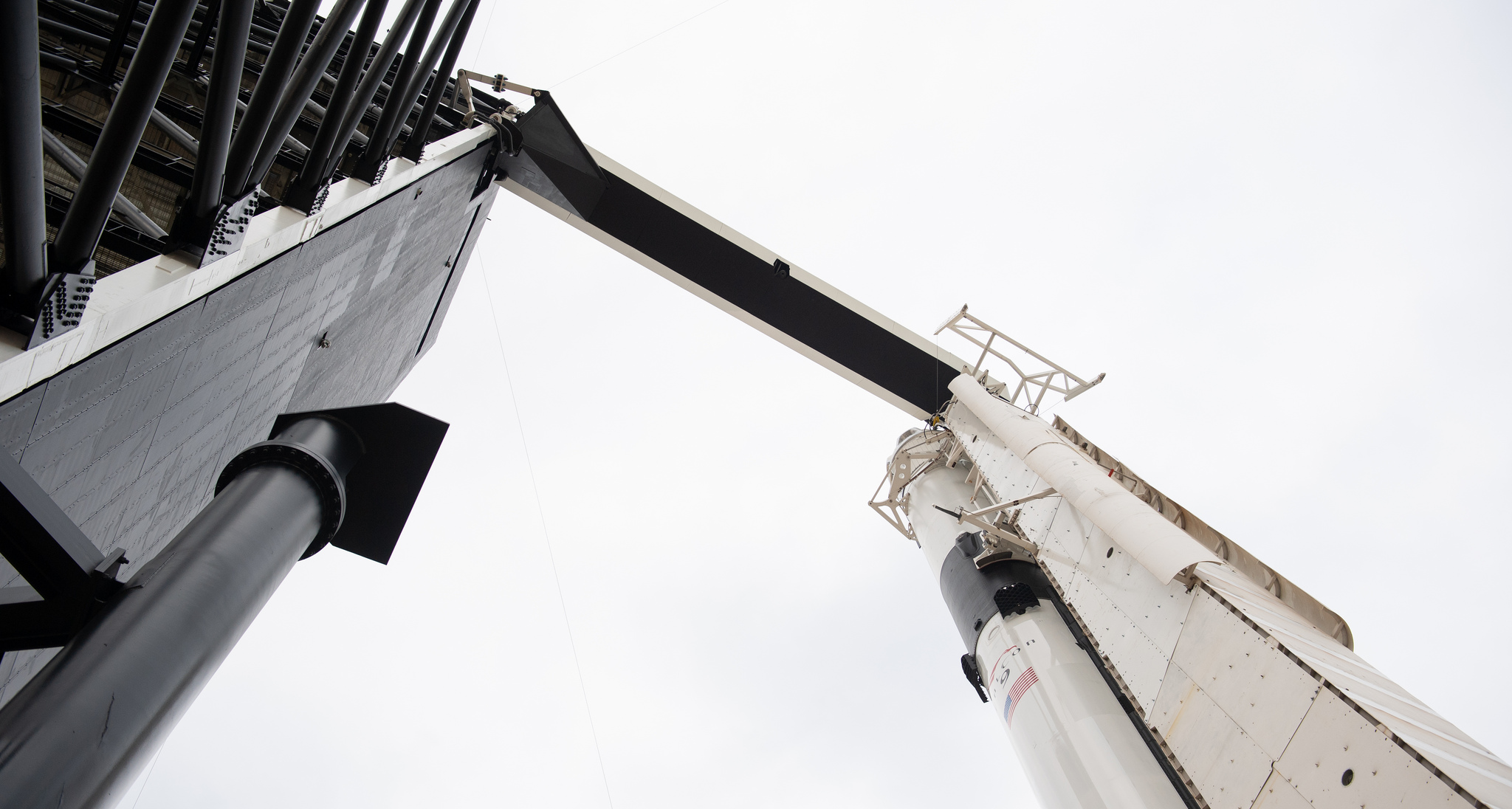
A bridge known as the "crew access arm" provides a walkway for astronauts to board the Crew Dragon.
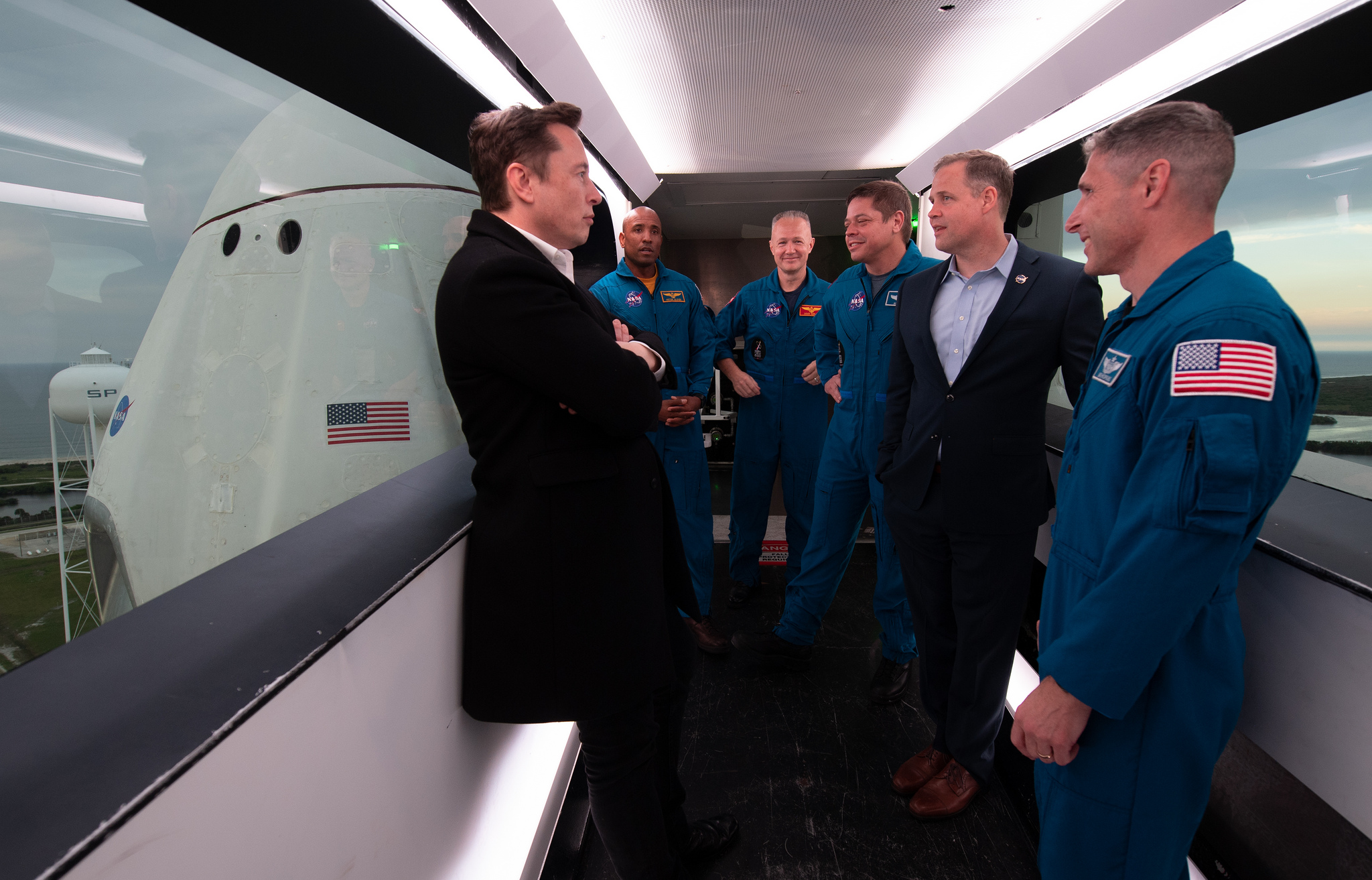
From left to right: SpaceX CEO Elon Musk, NASA astronauts Victor Glover, Doug Hurley, Bob Behnken, NASA Administrator Jim Bridenstine and NASA astronaut Mike Hopkins stand in the crew access arm during a tour of Launch Complex 39A on March 1, 2019.
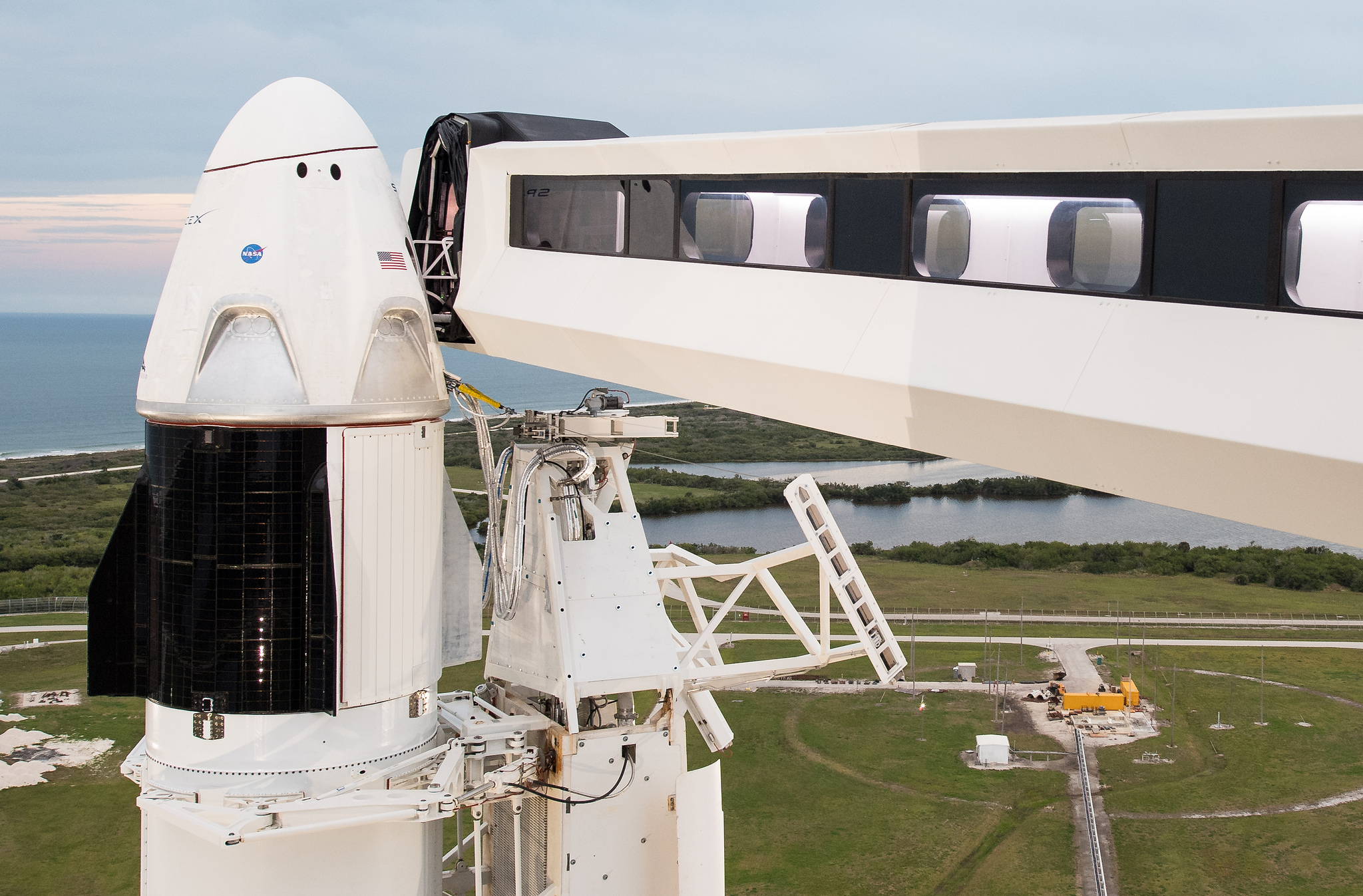
A view from the fixed service structure on Pad 39A shows where astronauts will board the Crew Dragon from the crew access arm.
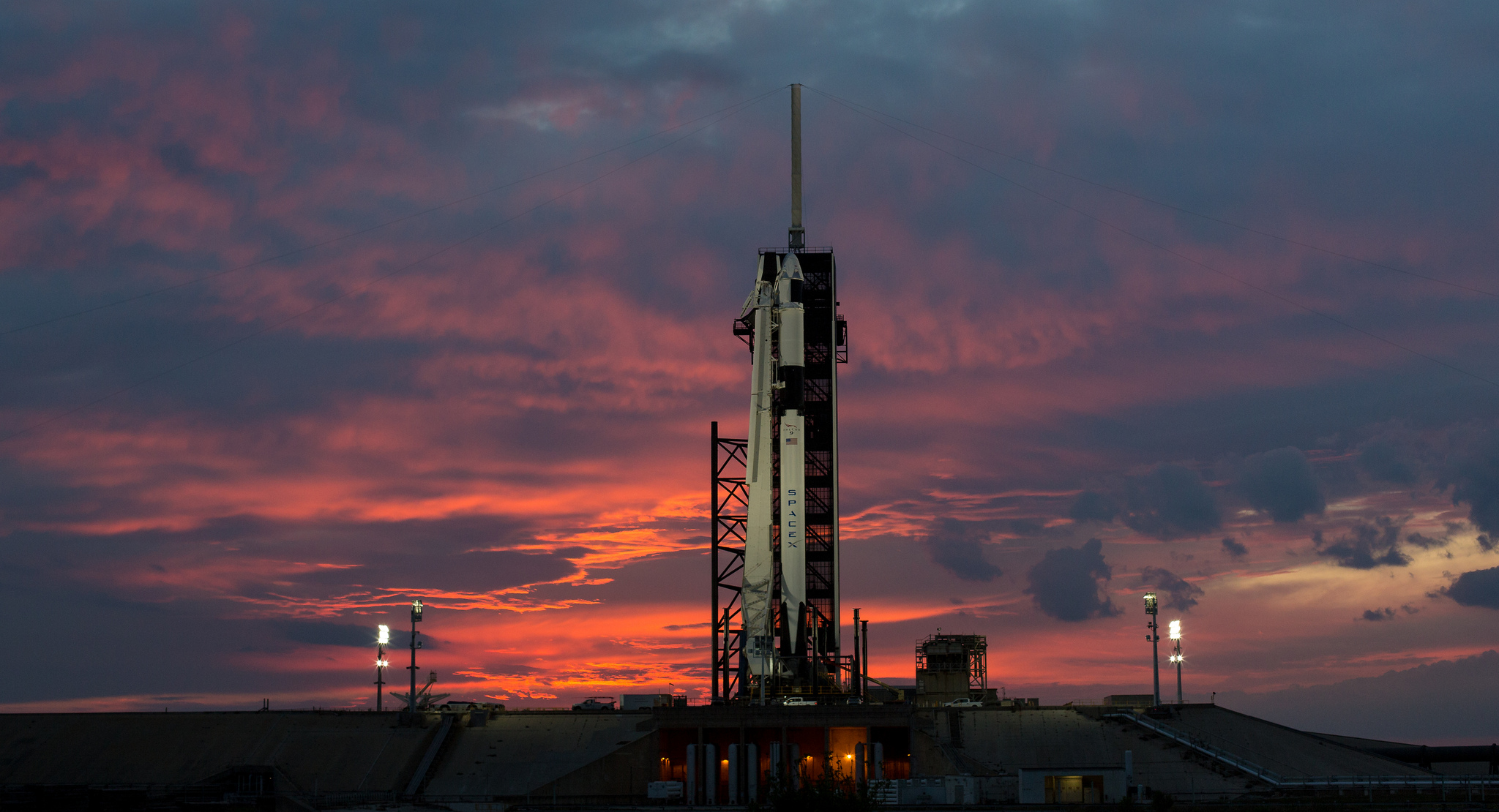
The sun sets behind the Falcon 9 rocket on the evening before its launch.
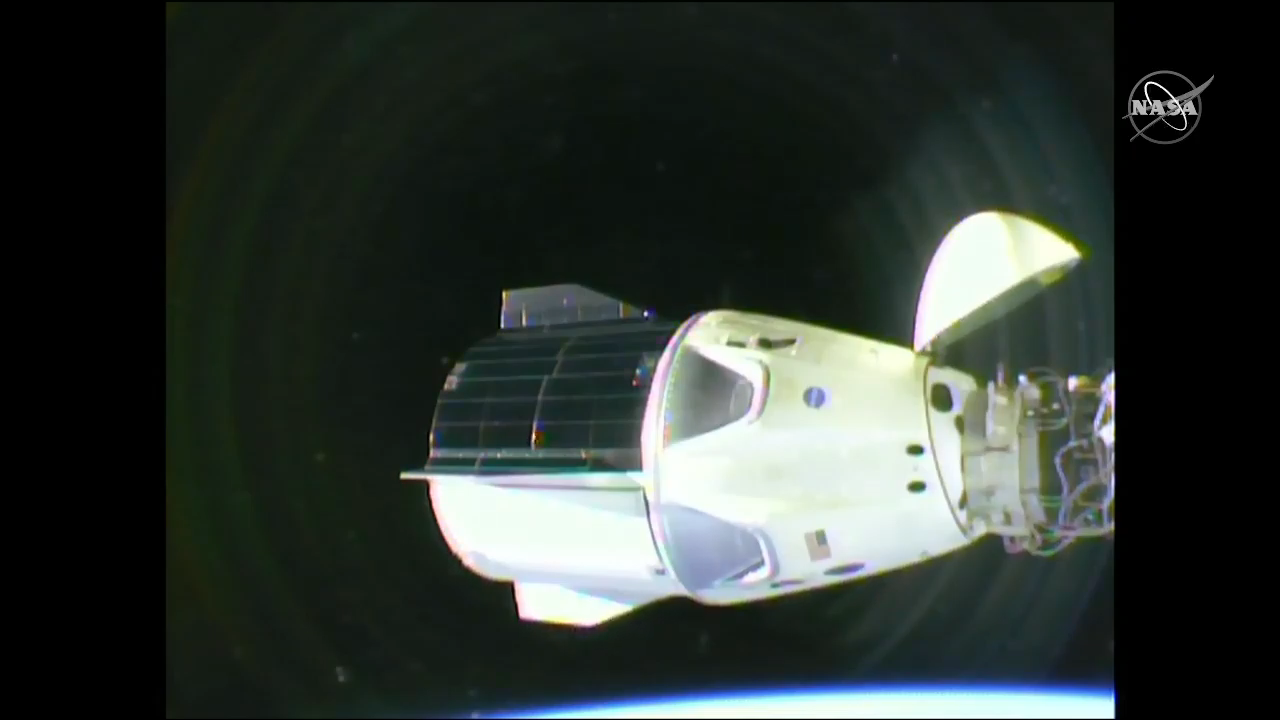
Crew Dragon is pictured on the morning of its departure from the International Space Station on March 8, 2019.
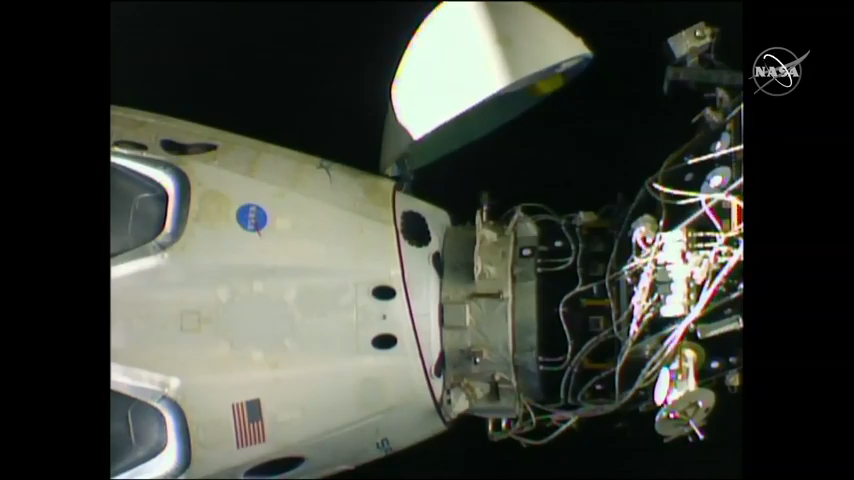
A close-up view from one of the space station's external cameras shows the Crew Dragon attached to the International Docking Adapter outside the Harmony module.
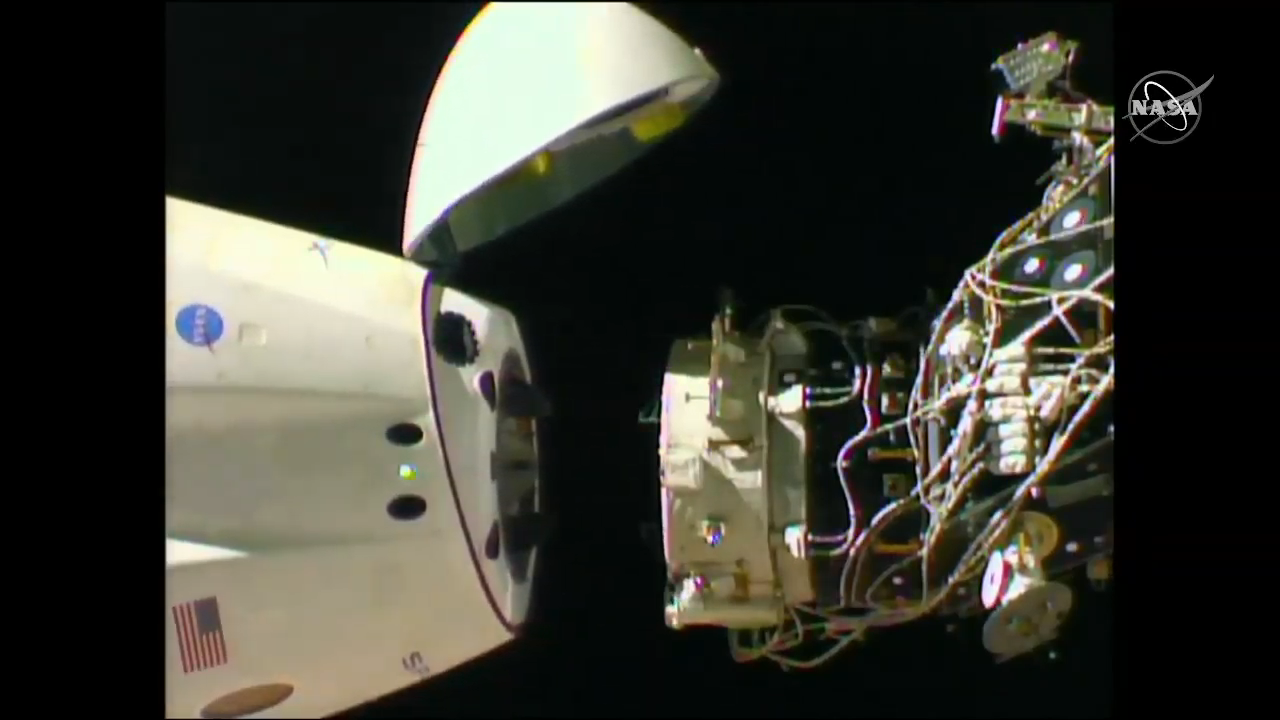
The Crew Dragon undocked from the International Space Station on March 8, 2019 at 2:32 p.m. EST (0732 GMT).
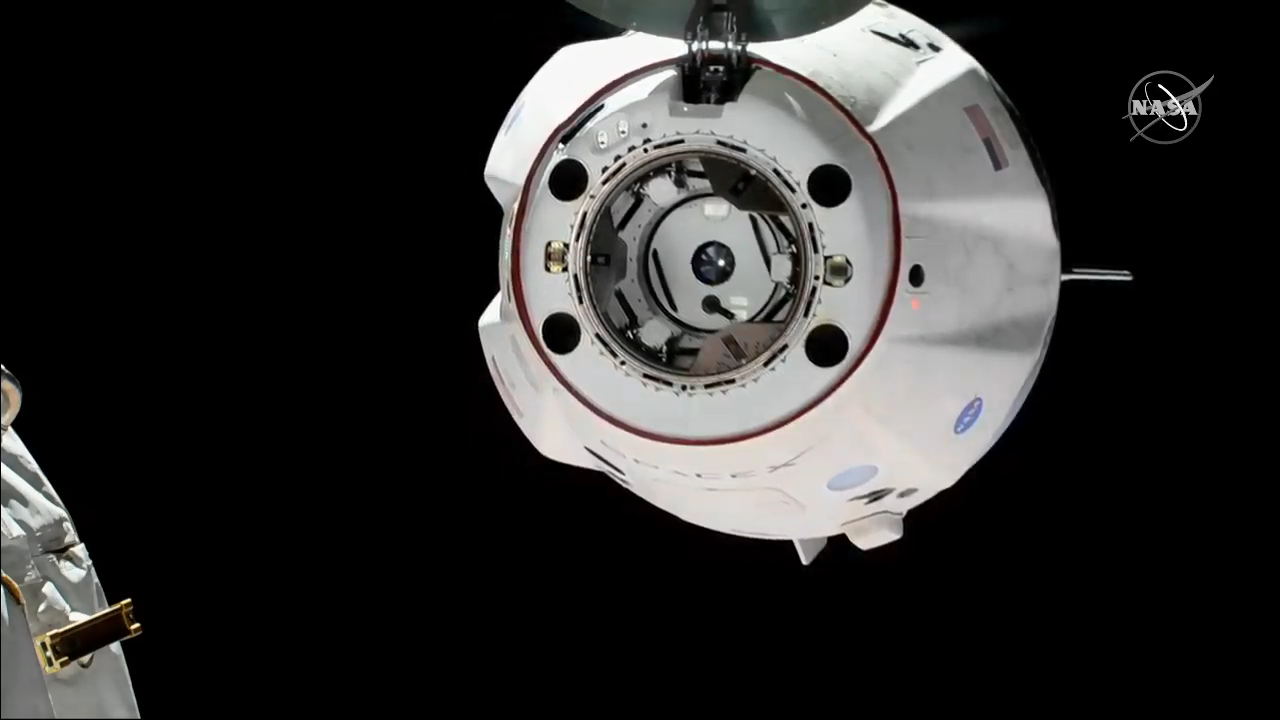
The Crew Dragon drifts away from the International Space Station shortly after undocking on March 8, 2019.
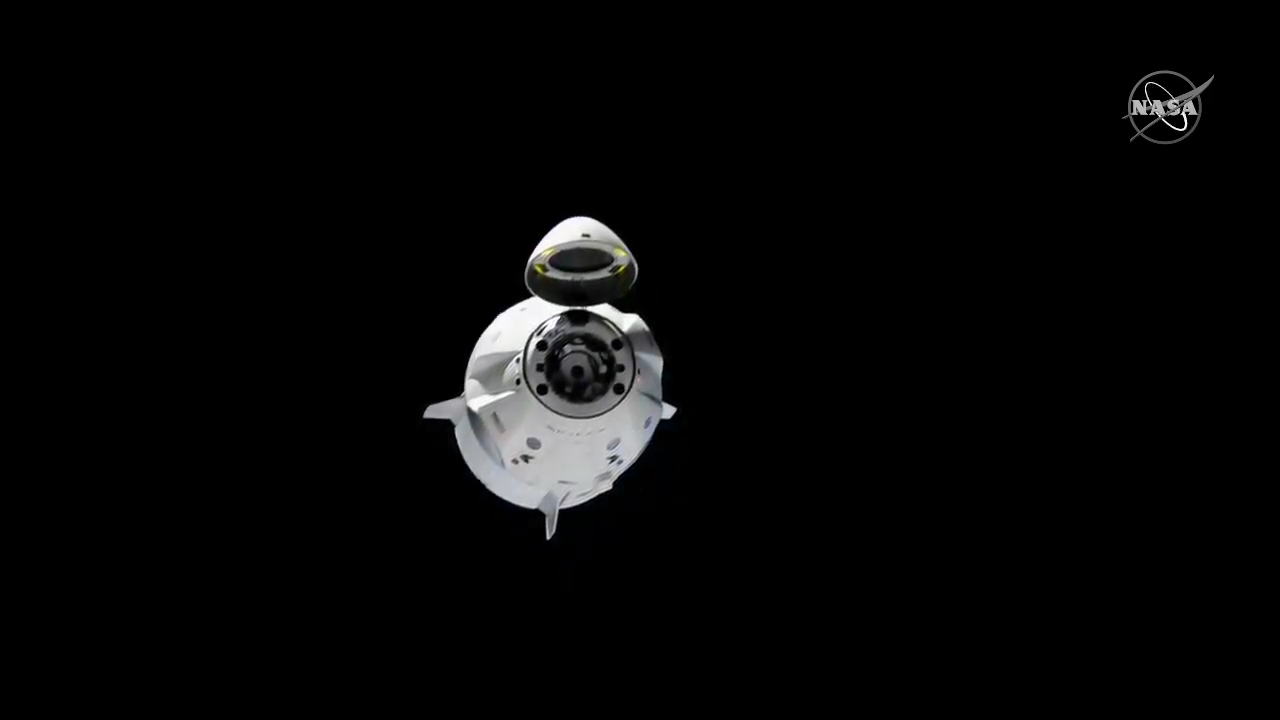
The Crew Dragon drifts away from the International Space Station shortly after undocking on March 8, 2019.
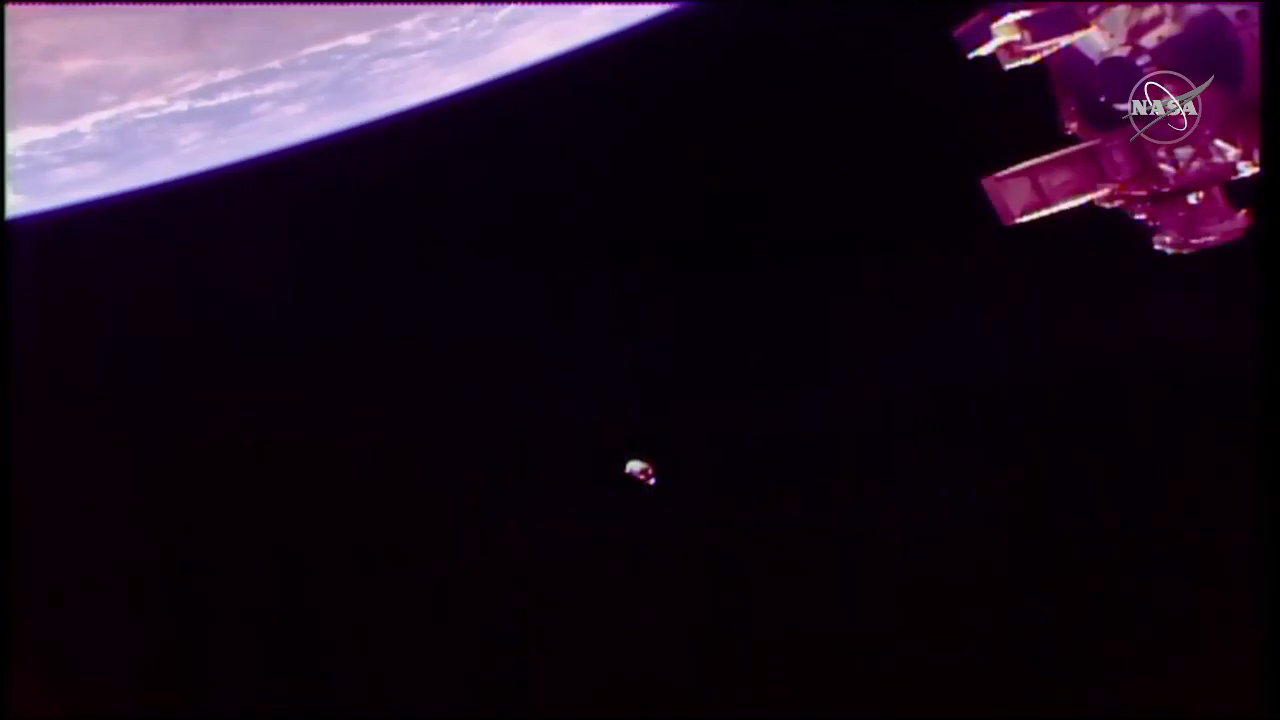
Earth and part of the space station can be seen in this view of the Crew Dragon's departure on March 8, 2019.
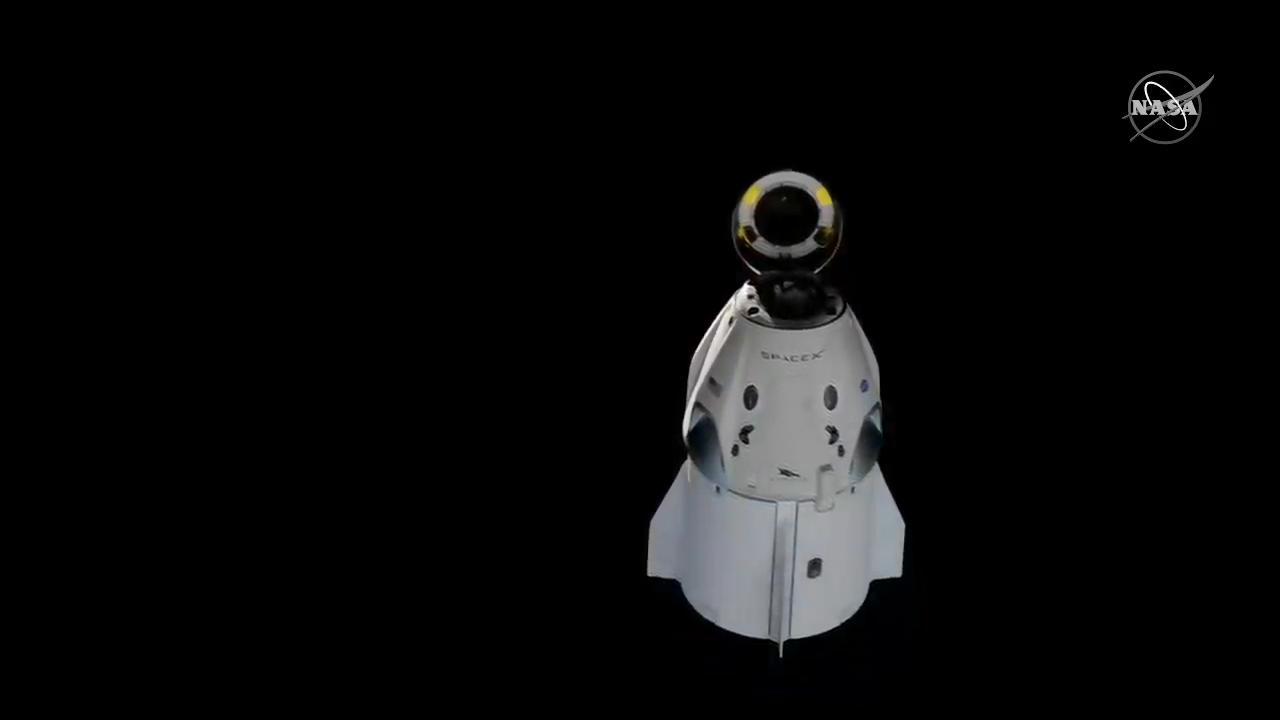
Crew Dragon's nose cone, which opened up to allow it to dock at the space station, closes before re-entry.
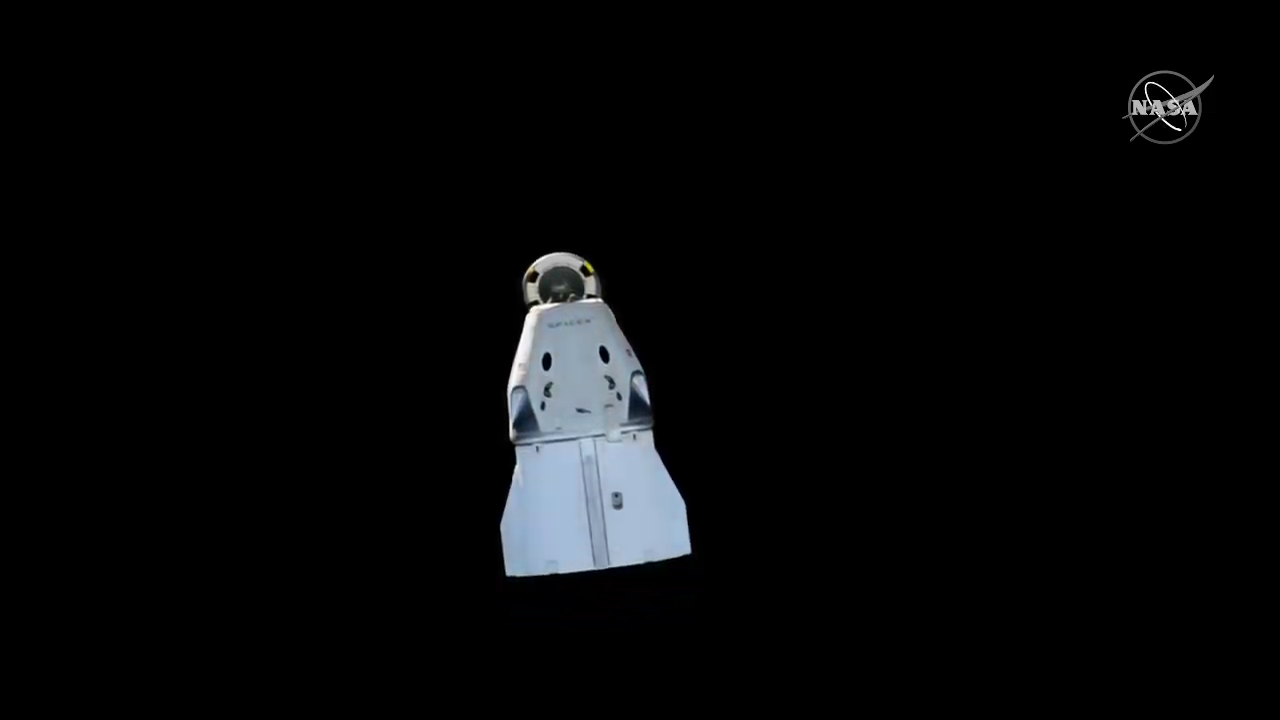
The Crew Dragon drifts away from the International Space Station shortly after undocking on March 8, 2019.
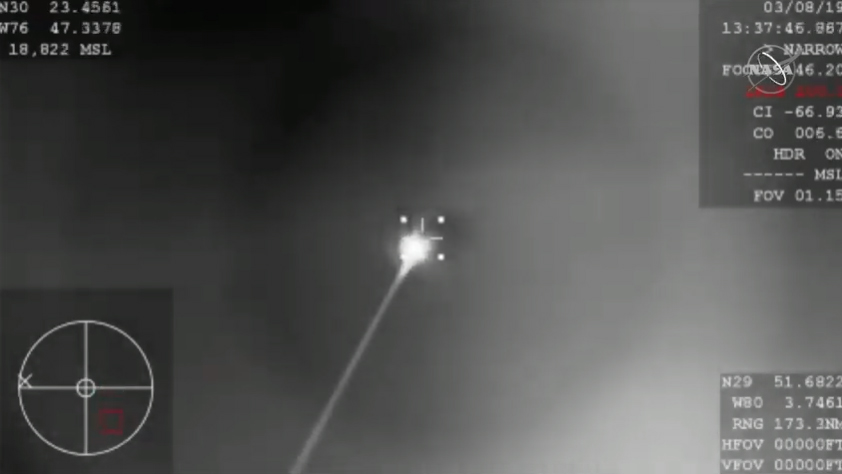
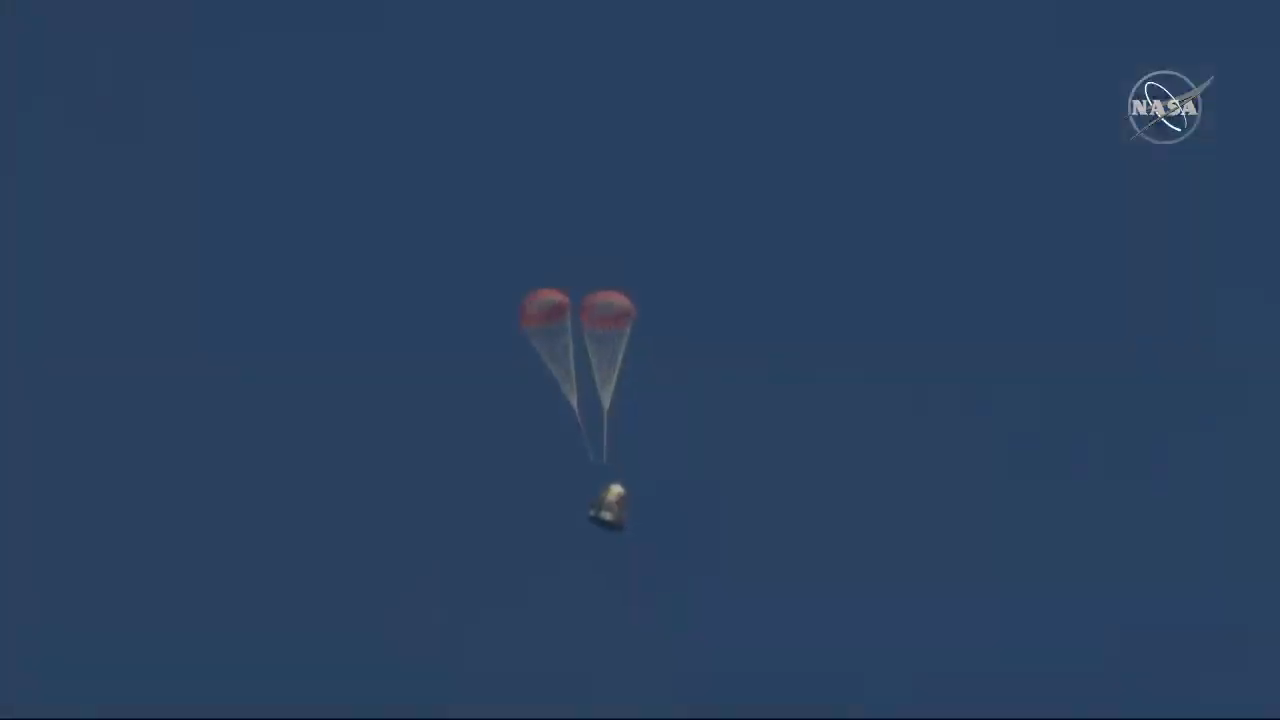
The Crew Dragon capsule deploys its first set of parachutes while descending to Earth for a splashdown in the Atlantic Ocean.
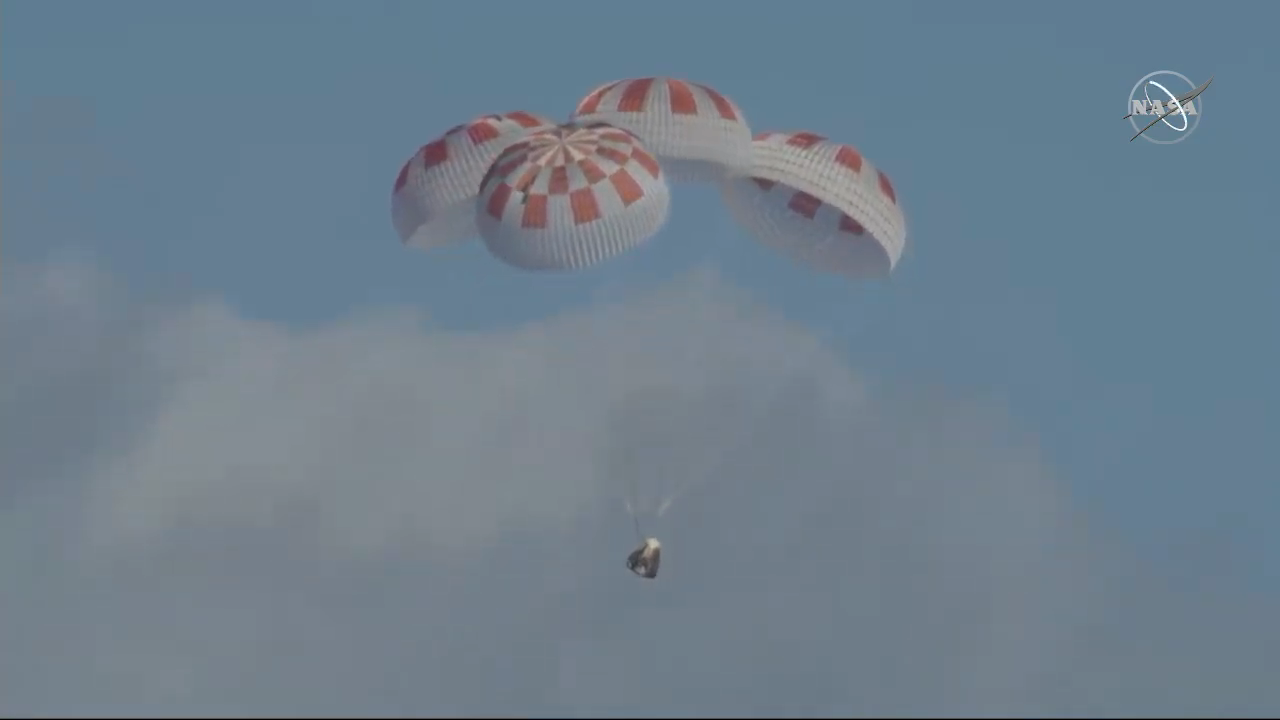
All four parachutes deployed flawlessly as the Crew Dragon came in for its historic first splashdown in the Atlantic Ocean.
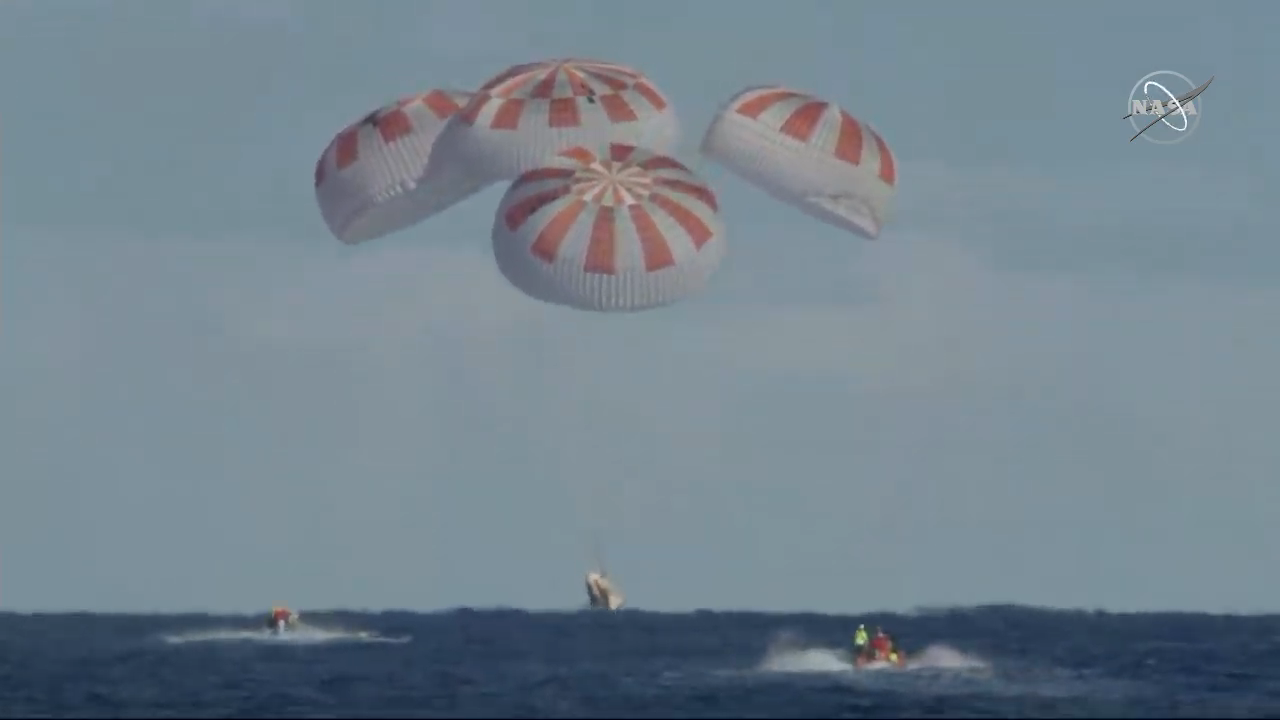
Houston, we have a splashdown! The Crew Dragon executed a picture-perfect water landing on March 8, 2019 at 8:45 a.m. EST (1345 GMT).
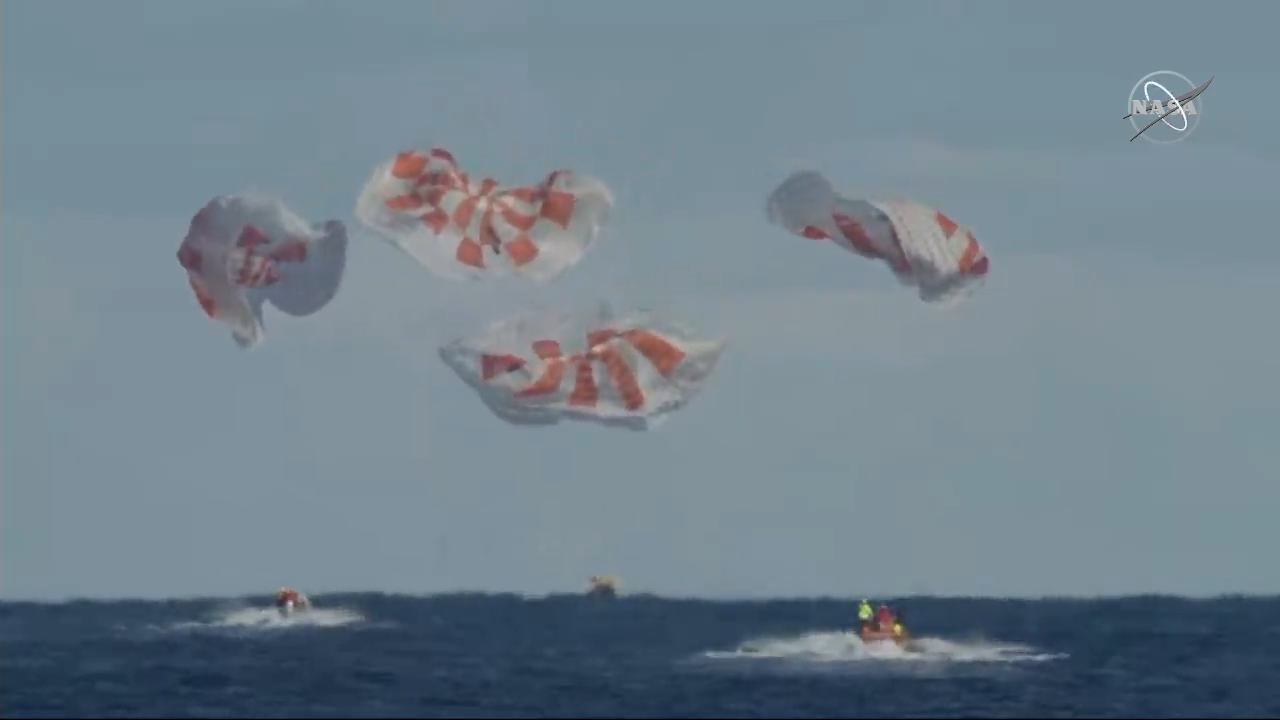
Recovery crews rush to the Crew Dragon capsule after splashdown.
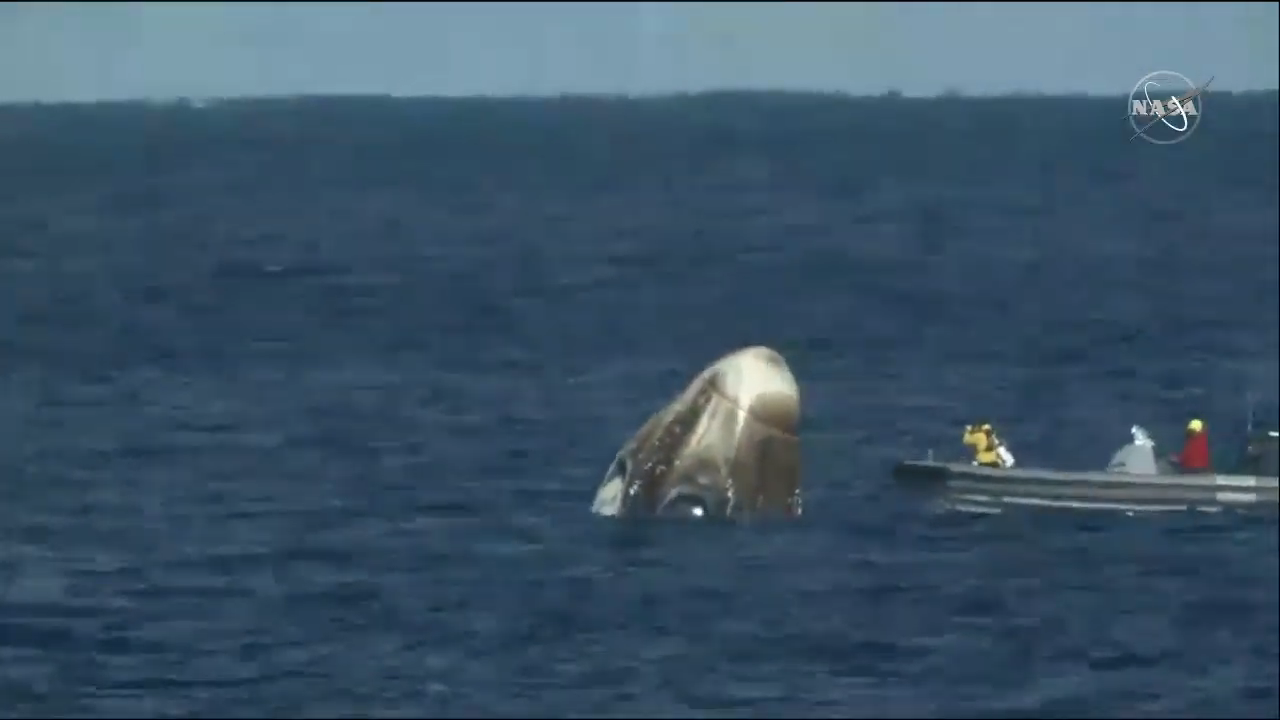
The Crew Dragon bobs in the Atlantic Ocean as recovery teams come by boat to retrieve it.
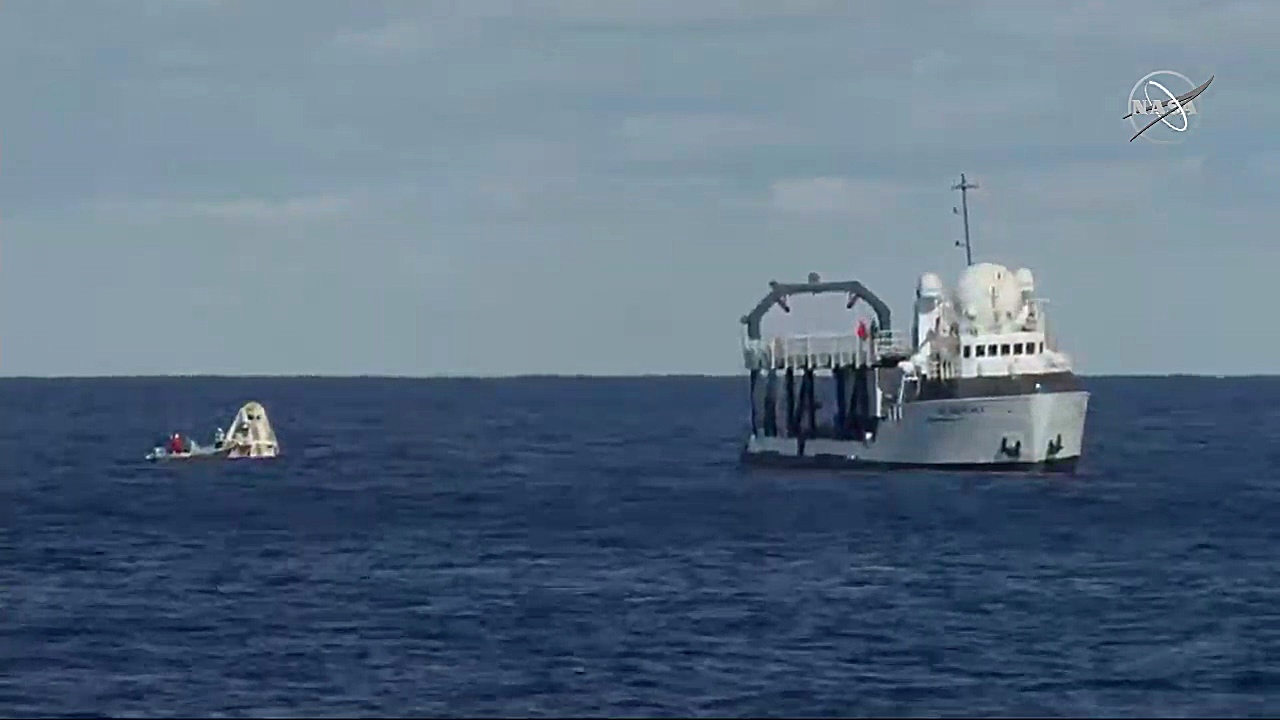
Recovery teams tow the Crew Dragon to SpaceX's recovery vessel.
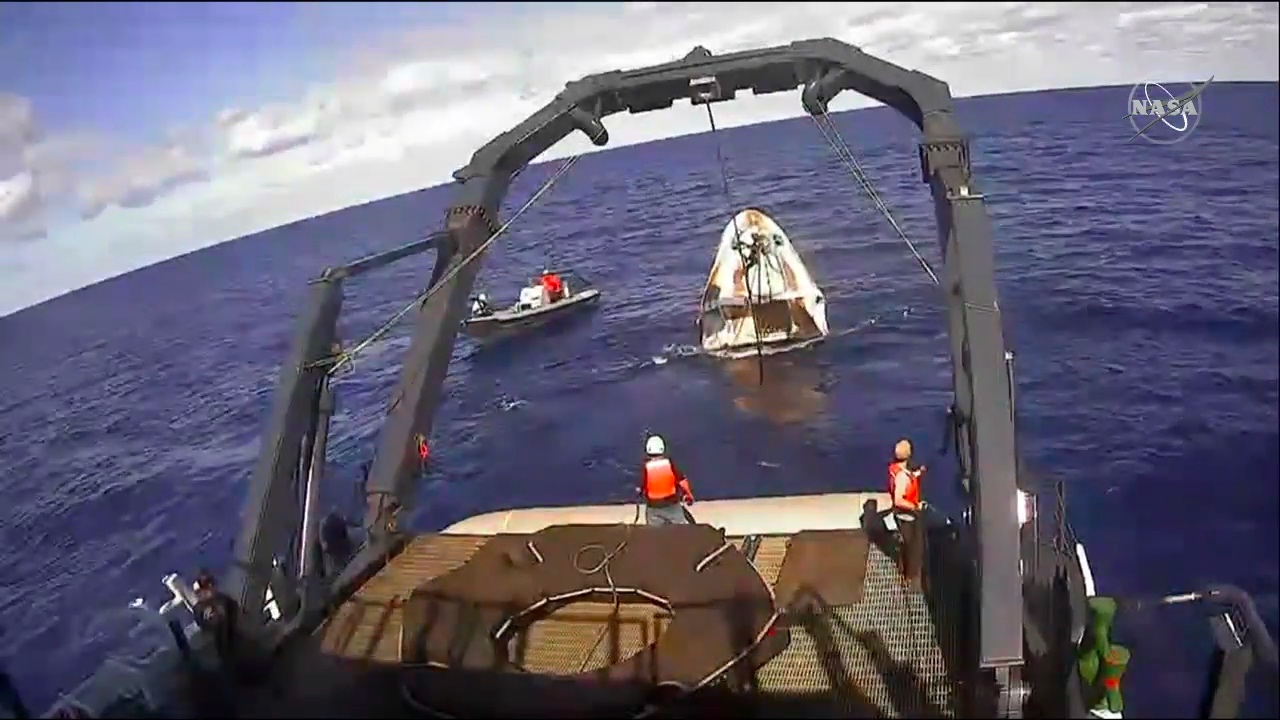
The Crew Dragon capsule is towed onto the recovery vessel.
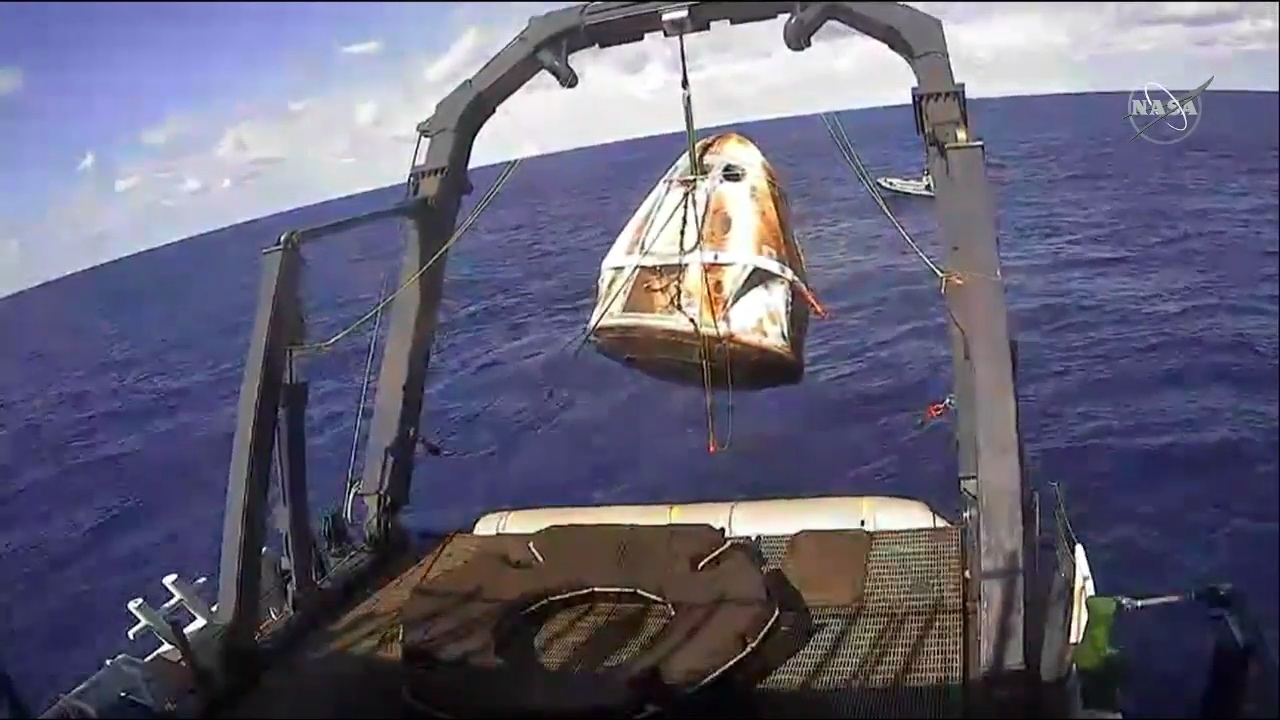
A hydraulic lift hoists the Crew Dragon out of the water and onto the recovery ship.
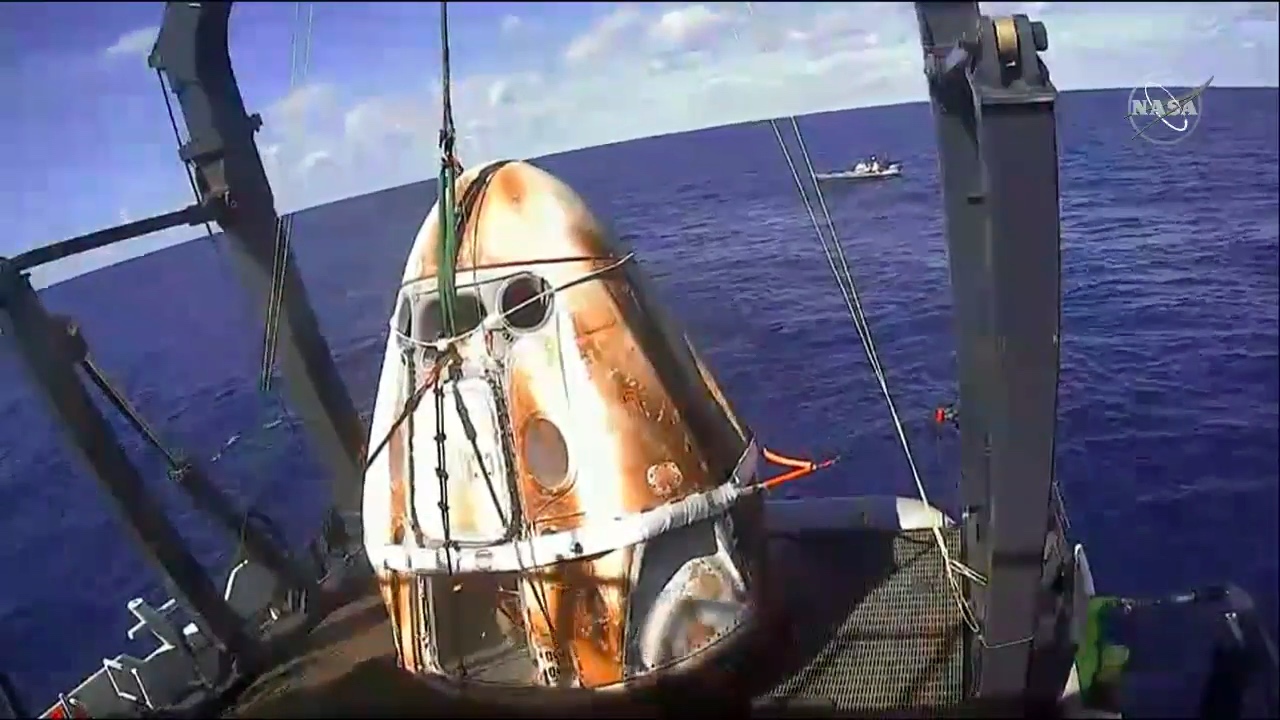
Looking like a toasted marshmallow, the Crew Dragon sits on the recovery vessel.
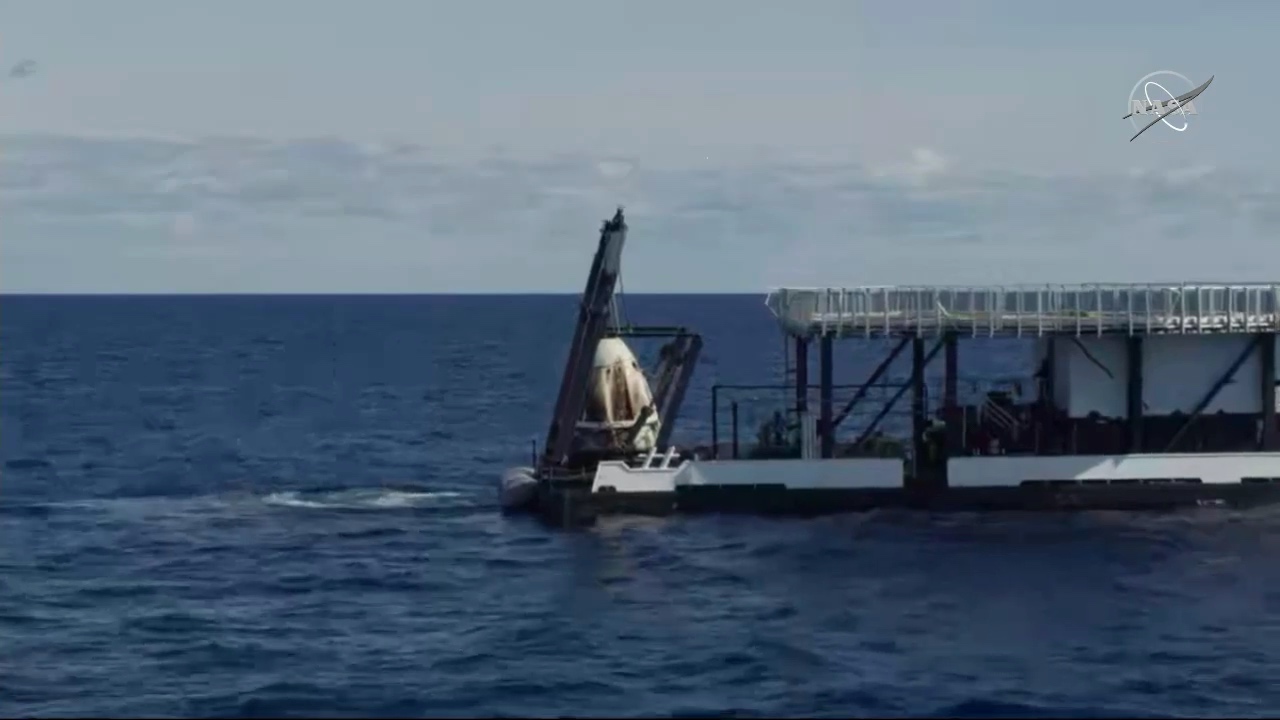
The recovery vessel brings the Crew Dragon back to shore.

Hanneke Weitering is a multimedia journalist in the Pacific Northwest reporting on the future of aviation at FutureFlight.aero and Aviation International News and was previously the Editor for Spaceflight and Astronomy news here at Space.com. As an editor with over 10 years of experience in science journalism she has previously written for Scholastic Classroom Magazines, MedPage Today and The Joint Institute for Computational Sciences at Oak Ridge National Laboratory. After studying physics at the University of Tennessee in her hometown of Knoxville, she earned her graduate degree in Science, Health and Environmental Reporting (SHERP) from New York University. Hanneke joined the Space.com team in 2016 as a staff writer and producer, covering topics including spaceflight and astronomy. She currently lives in Seattle, home of the Space Needle, with her cat and two snakes. In her spare time, Hanneke enjoys exploring the Rocky Mountains, basking in nature and looking for dark skies to gaze at the cosmos.









